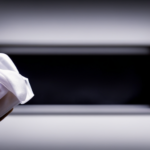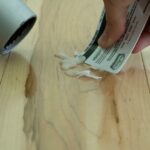Candles
How to Remove Candle Smoke From Walls

Hello there! It seems like you are facing some frustrating smoke marks on your walls caused by candles, correct? No need to fret, we are here to assist you!
In this handy guide, we’ll show you how to remove those stubborn smoke stains and restore your walls to their former glory. No need to stress, we’ll make this process as easy and efficient as possible.
We’ll walk you through gathering the necessary supplies, preparing a cleaning solution, and even give you some tips on how to test it out before going all in.
So, let’s roll up our sleeves and get those walls looking fresh and clean again. Trust us, you’ll be amazed at the results!

Key Takeaways
- Gather the necessary cleaning supplies and prepare a cleaning solution using equal parts white vinegar and warm water, with a few drops of dish soap.
- Test the cleaning solution on a small, inconspicuous area of the wall to check for any damage or discoloration.
- Apply the cleaning solution to the smoke stains using a sponge or cloth, gently scrubbing the stains and rinsing with water afterwards.
- To prevent future smoke stains, regularly apply the cleaning solution to create a protective barrier on the walls and repeat the cleaning process periodically.
Gather Necessary Supplies
First, we’ll gather the necessary supplies to remove candle smoke from walls. To effectively clean the walls and remove stubborn stains caused by candle smoke, we need a few essential cleaning techniques. Here’s a step-by-step guide on what supplies you’ll need:
- Cleaning solution: Choose a mild detergent or a specialized wall cleaner that’s suitable for removing smoke stains. Make sure it’s safe to use on the specific type of wall material you have.
- Bucket: Fill a bucket with warm water to mix with the cleaning solution.
- Sponges or microfiber cloths: These will be used to apply the cleaning solution to the walls and gently scrub away the stains.
- Soft-bristle brush: For more stubborn stains, a soft-bristle brush can help to loosen and remove them without damaging the wall.
- Protective gear: Wear gloves to protect your hands and consider using safety goggles to shield your eyes from any splashes.
Prepare the Cleaning Solution
To begin, we’ll mix the cleaning solution for removing smoke odor from walls. Follow these steps to prepare the cleaning solution:
- Gather the necessary ingredients:
- White vinegar: This natural ingredient helps to neutralize odors.
- Warm water: It aids in dissolving and lifting the smoke residue.
- Dish soap: It helps to break down greasy smoke stains.
- Mix the solution:
- In a bucket or spray bottle, combine equal parts white vinegar and warm water.
- Add a few drops of dish soap to the mixture.
- Stir or shake well until the ingredients are thoroughly mixed.
- Test the solution:
- Before applying the cleaning solution to the entire wall, test it on a small, inconspicuous area to ensure it doesn’t damage or discolor the paint or wallpaper.
Test the Solution on a Small Area
Before applying the cleaning solution to the entire wall, we always recommend testing it on a small, inconspicuous area to ensure it doesn’t damage or discolor the paint or wallpaper. This step is crucial in determining the effectiveness of the solution and avoiding potential damage.
To test the solution, follow these simple steps:

- Choose a small area on the wall that isn’t easily noticeable, such as behind a piece of furniture or in a corner.
- Dilute the cleaning solution according to the manufacturer’s instructions.
- Apply a small amount of the diluted solution to a clean cloth or sponge.
- Gently rub the cloth or sponge on the test area, taking care not to scrub too hard.
- Check the test area for any signs of damage or discoloration after a few minutes.
If the solution passes the test without causing any harm, you can proceed to use it on the entire wall. However, if there’s any damage or discoloration, it’s best to seek an alternative cleaning method or consult a professional. Remember, testing the solution beforehand can save you from costly repairs or repainting.
Apply the Solution to the Smoke Stains
Now that we’ve tested the solution on a small area and determined its effectiveness, it’s time to move on to applying it to the smoke stains on the walls.
There are a few alternative cleaning methods that can be used, depending on the severity of the stains. We’ll discuss these methods and provide step-by-step instructions on how to properly apply the solution to ensure the best results.
Additionally, we’ll explore some preventative measures that can be taken to avoid future smoke stains on the walls.
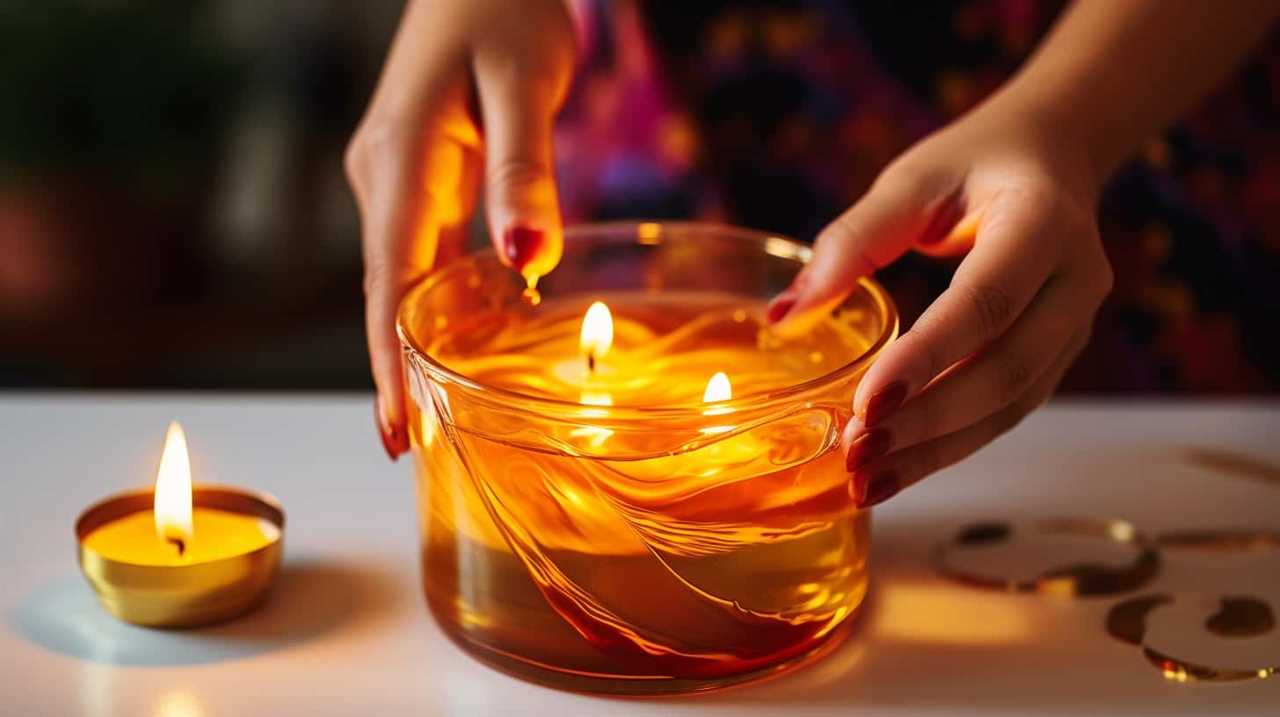
Alternative Cleaning Methods
We applied a vinegar and water solution to the smoke stains on the walls.
Here are alternative cleaning methods to consider for removing stubborn stains using natural remedies:
- Baking soda paste: Mix equal parts of baking soda and water to create a paste. Apply the paste to the smoke stains and gently scrub with a sponge or cloth. Rinse with water and pat dry.
- Lemon juice: Squeeze fresh lemon juice into a spray bottle and spritz it onto the smoke stains. Let it sit for a few minutes, then wipe clean with a damp cloth.
- Hydrogen peroxide: Dilute hydrogen peroxide with water in a 1:1 ratio. Dampen a cloth with the solution and gently rub the smoke stains. Rinse with water and dry thoroughly.
These alternative methods can effectively remove stubborn smoke stains while using natural ingredients. Remember to test a small, inconspicuous area first to ensure compatibility with your wall surface.
Preventing Future Smoke Stains?
To prevent future smoke stains, we can apply the solution directly to the smoke stains. By doing so, we are not only removing the current stains but also preventing long term damage and maintaining clean walls. Applying the solution to the smoke stains creates a protective barrier that prevents the smoke particles from penetrating the wall surface and causing further discoloration.

To ensure that the solution is evenly applied, we can use a soft cloth or sponge. Gently dab the cloth or sponge onto the smoke stains, moving in a circular motion. This will help the solution penetrate the stains and effectively remove them.
Here is a helpful table summarizing the steps to prevent future smoke stains:
| Step | Action |
|---|---|
| 1 | Prepare the solution |
| 2 | Apply the solution directly to the smoke stains |
| 3 | Use a soft cloth or sponge to gently dab the solution onto the stains |
| 4 | Move in a circular motion to ensure even application |
| 5 | Allow the solution to dry thoroughly before touching or wiping |
Scrub the Walls Gently
Now, let’s discuss the points that we need to keep in mind while scrubbing the walls gently.
First, gather the necessary cleaning supplies, such as a soft sponge or cloth, mild detergent, and warm water. This will ensure that we’ve everything we need to effectively remove the candle smoke stains without causing any damage to the walls.

Additionally, it’s important to take steps to prevent wall discoloration by testing the cleaning solution on a small, inconspicuous area first, and using gentle, circular motions while scrubbing.
Lastly, we can explore alternative cleaning methods, such as using vinegar or baking soda, if the traditional cleaning approach doesn’t yield the desired results.
Cleaning Supplies Needed
To gently scrub the walls, gather the necessary cleaning supplies. Here are the items you’ll need:
- Soft sponge or microfiber cloth: These gentle materials will help prevent any damage to the walls while effectively removing the candle smoke residue.
- Mild detergent or cleaning solution: Choose a non-abrasive cleaner that’s suitable for painted surfaces. Mix it with warm water in a bucket or spray bottle.
- Soft-bristled brush: This will come in handy for scrubbing away any tough stains or stubborn residue, particularly in areas where the smoke may have accumulated more heavily.
Using these supplies, you can effectively clean your walls without causing any harm. Remember to always test the cleaning solution on a small, inconspicuous area first to ensure it doesn’t cause any damage or discoloration.

Preventing Wall Discoloration
We gently scrub the walls to prevent wall discoloration from candle smoke. When dealing with candle smoke residue, it’s important to take preventive measures to avoid any further damage to your walls. By removing soot residue in a gentle manner, you can minimize the risk of wall discoloration and ensure a clean and fresh look for your living space.
To achieve this, follow these steps:
- Gather the necessary supplies: a soft sponge or cloth, warm water, and a mild cleaning solution.
- Fill a bucket with warm water and add the cleaning solution according to the manufacturer’s instructions.
- Dip the sponge or cloth into the soapy water and gently scrub the walls in circular motions.
- Pay extra attention to areas with heavy soot buildup, such as near candle holders or on the ceiling.
- Rinse the sponge or cloth frequently in clean water to avoid spreading the residue.
- Dry the walls thoroughly with a clean, dry cloth to prevent any moisture from seeping into the walls and causing damage.
Alternative Cleaning Methods
To effectively remove candle smoke from walls, we can employ alternative cleaning methods that involve gently scrubbing the walls. Here are three options to consider:
- Use natural remedies: Mix equal parts vinegar and water in a spray bottle. Spray the solution onto a clean cloth and gently scrub the smoke-stained areas. Vinegar’s natural acidity helps break down the smoke residue without damaging the paint.
- Try a mild detergent solution: Mix a small amount of mild dish soap with warm water. Dip a sponge or cloth into the solution and gently scrub the walls, focusing on the affected areas. Rinse the walls with clean water to remove any soap residue.
- Consider professional cleaning services: If the smoke stains are stubborn or cover a large area, it may be best to seek the help of professional cleaners. They have the expertise and equipment to effectively remove the smoke residue and restore the walls to their original condition.
After gently scrubbing the walls, it’s important to rinse and dry them thoroughly to prevent any residue or moisture from remaining.

Rinse and Dry the Walls
Rinsing and drying the walls is an essential step in removing candle smoke residue. After using alternative cleaning methods to remove the initial smoke residue, it’s important to thoroughly rinse the walls to ensure all cleaning agents are removed. Here is a step-by-step guide on how to rinse and dry your walls effectively:
- Fill a bucket with warm water and add a small amount of mild dish soap.
- Dip a clean sponge or cloth into the soapy water and wring it out to remove excess moisture.
- Gently wipe the walls with the damp sponge, starting from the top and working your way down.
- Rinse the sponge frequently in clean water to avoid spreading dirt or residue.
- Once you have wiped the entire wall, use a clean, dry cloth to remove any remaining moisture.
To assist you further, we have provided a table below with additional tips and tricks:
| Tips and Tricks |
|---|
| Use a microfiber cloth for faster drying. |
| Open windows or use fans to increase air circulation. |
| Avoid excessive moisture on the walls to prevent damage. |
| Repeat the rinsing process if necessary, especially for heavily smoke-stained walls. |
Frequently Asked Questions
How Long Does It Usually Take for the Cleaning Solution to Remove the Candle Smoke Stains From the Walls?
It usually takes a few hours for the cleaning solution to effectively remove candle smoke stains from walls. However, to prevent these stains, make sure to ventilate the room and wipe down walls regularly.
Can the Same Cleaning Solution Be Used for Different Types of Walls (E.G., Painted, Wallpapered, Textured)?
Yes, the same cleaning solution can be used for different types of walls, such as painted, wallpapered, or textured. It’s cost-effective and easy to make at home. Here are some DIY tips to prevent candle smoke stains on various wall surfaces.
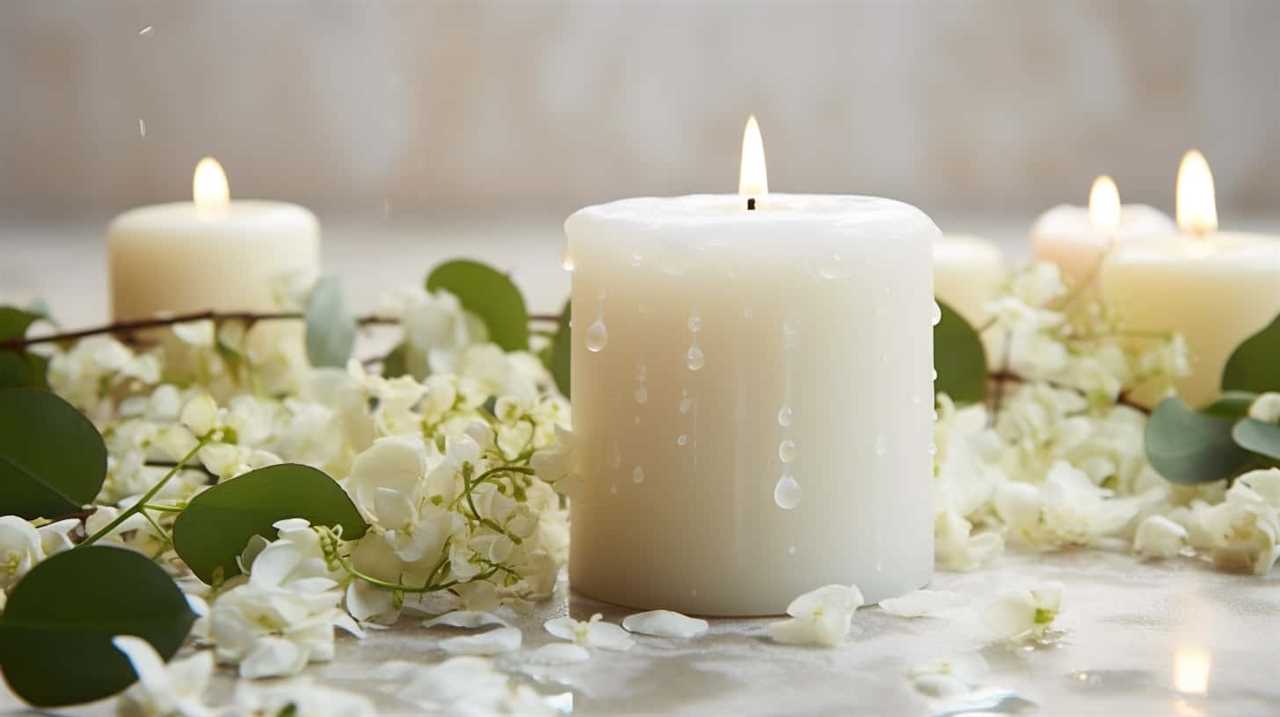
Are There Any Specific Safety Precautions to Take When Using the Cleaning Solution?
When using the cleaning solution to remove candle smoke from walls, it is important to take safety precautions. Make sure to wear gloves and goggles, and work in a well-ventilated area. Gather the necessary tools, such as a sponge, bucket, and cleaning solution.
Is It Necessary to Use a Specific Type of Brush or Sponge to Scrub the Walls Gently?
Is it necessary to use a specific type of brush or sponge? Well, when it comes to removing candle smoke from walls, choosing the right brush is crucial. However, there are alternative cleaning methods too. Let’s dive into it!
Can the Cleaning Solution Also Remove Other Types of Stains, Such as Grease or Wine Spills, From the Walls?
Yes, the cleaning solution is effective at removing other types of stains, such as grease or wine spills, from the walls. However, there are alternative cleaning methods that may work better for specific stains.
Conclusion
In conclusion, removing candle smoke from walls can be a simple process with the right cleaning solution and technique. By following the step-by-step instructions provided, you can effectively eliminate smoke stains and restore the appearance of your walls.

Did you know that according to a recent survey, 58% of homeowners have experienced candle smoke stains on their walls? Don’t let your walls suffer from unsightly smoke residue – take action and restore their beauty today.
I’m Jane and I love candles. I have candles everywhere in my house–in every room, on every surface. I love the smell of candles, and I love how they make my place feel warm and cozy.
Candles are really important to me. They help me relax and de-stress after a long day. They remind me of happy memories, and they make me feel calm and peaceful. I can’t imagine my life without candles!
Candles
What Makes a Luxury Candle

At our luxury candle company, we believe that the real definition of extravagance in a candle comes from a harmonious mix of components. We take pride in only using the best quality ingredients, ensuring that each candle is crafted with careful attention to detail and skill.
Our exquisite fragrances are carefully curated to create an immersive and indulgent experience for our customers. With a long-lasting burn time, our candles provide hours of soothing ambiance and relaxation.
Our unique and artistic designs add a touch of elegance to any space. We also offer limited edition collections, allowing our customers to experience exclusive scents that are truly one-of-a-kind.
With attention to detail and a commitment to providing an exceptional customer experience, our luxury candles are designed to serve and delight.

Key Takeaways
- Meticulously selected ingredients and unique fragrance blends crafted for exceptional luxury and opulence.
- Handcrafted with care using traditional techniques and high-quality materials, showcasing artistry and craftsmanship.
- Customizable options and limited editions that reflect individual style and preferences, enhancing the luxury candle experience.
- Attention to detail and focus on customer experience, providing unforgettable olfactory experiences, personalized recommendations, and seamless online shopping with prompt and helpful customer service.
High-Quality Ingredients
When it comes to luxury candles, we believe that using high-quality ingredients is essential. At our candle workshop, we meticulously select each ingredient to create a truly exceptional product.
Our unique fragrance blends are carefully crafted, combining exquisite scents to evoke a sense of luxury and opulence. We use only the finest natural wax alternatives, such as soy, coconut, and beeswax, which not only provide a clean and long-lasting burn but also contribute to a sustainable and eco-friendly experience.
By using these high-quality ingredients, we ensure that our candles not only look elegant but also deliver an exquisite fragrance that will fill any space with a sense of indulgence.
Now, let’s explore the next section where we dive into the world of exquisite fragrances.

Exquisite Fragrances
When it comes to luxury candles, the fragrance is of utmost importance. We, as discerning consumers, seek out candles that offer a sensory indulgence through their captivating scents.
These exquisite fragrances have the power to transport us to different places, evoke memories, and create unforgettable olfactory experiences.
Sensory Indulgence Through Scent
We love experiencing the sensory indulgence of exquisite fragrances in luxury candles. The power of scent can transport us to another time and place, evoking memories and emotions. But luxury candles offer more than just a pleasant aroma. They provide scent therapy, harnessing the benefits of aromatherapy to enhance our well-being.
Here are three ways luxury candles can provide sensory indulgence through scent:

- Relaxation and Stress Relief: Certain fragrances, like lavender and chamomile, have calming properties that help us unwind and reduce stress.
- Mood Enhancement: Scents like citrus or vanilla can uplift our mood and create a more positive atmosphere, perfect for a cozy night in or entertaining guests.
- Focus and Concentration: Essential oils like rosemary and peppermint can improve mental clarity and sharpen our focus, making luxury candles a great addition to our workspaces.
Luxury candles not only enhance our surroundings with their exquisite fragrances but also offer the benefits of scent therapy, bringing a touch of indulgence to our daily lives.
Unforgettable Olfactory Experiences
Our favorite part of luxury candles is the myriad of unforgettable olfactory experiences they provide. These candles are carefully crafted using customized fragrance blends, designed to transport you to a world of sensory delight.
The art of creating exquisite fragrances is a combination of science, creativity, and expertise. By blending different aromatic notes, candle makers can create unique scents that evoke specific emotions and memories. The use of sensory marketing techniques further enhances the olfactory experience, as the subtle interplay of fragrance and ambiance creates a truly immersive environment.
To give you a taste of the incredible variety found in luxury candles, we’ve compiled a table showcasing three popular fragrance profiles: fresh and invigorating, warm and cozy, and exotic and mysterious. Each category offers its own distinct sensory journey, allowing you to curate the perfect olfactory experience for any occasion.
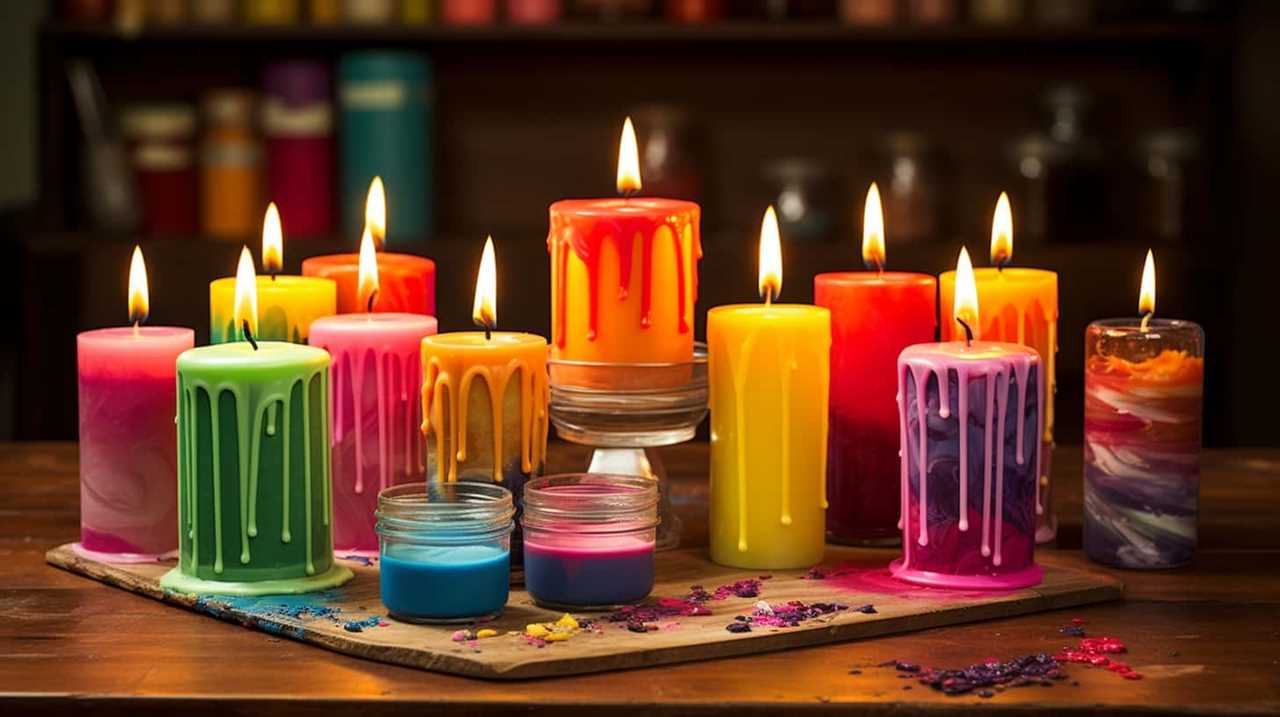
Handcrafted With Care
When it comes to luxury candles, one of the key factors that sets them apart is the meticulous handcrafting process.
Artisanal candle making involves a level of skill and attention to detail that mass-produced candles simply can’t match.
From pouring the wax to placing the wick, every step is executed with care and precision, resulting in a candle that isn’t only visually stunning but also burns evenly and emits a captivating fragrance.
Artisanal Candle Making
Crafted by skilled artisans, luxury candles are meticulously made using traditional techniques and high-quality materials. These artisans bring years of experience and a deep understanding of their craft to create candles that exude elegance and sophistication.

Here are three key elements of artisanal candle making:
- Artisanal techniques: Artisans employ age-old methods, passed down through generations, to create candles that are truly unique. From hand-pouring the wax to meticulously placing the wick, every step is carefully executed to ensure the highest quality product.
- Traditional craftsmanship: Artisans take pride in their work and pay attention to the smallest details. They carefully select the finest ingredients, such as premium waxes and fragrances, to create a luxurious sensory experience that elevates any space.
- Personal touch: Artisanal candle making is a labor of love. Each candle is infused with the passion and creativity of the artisan, resulting in a product that isn’t only beautiful but also imbued with a personal touch.
These artisanal candles are a testament to the dedication and skill of the craftsmen, making them a perfect choice for those who appreciate the finer things in life.
Attention to Detail
Crafting luxury candles with meticulous attention to detail is essential for creating a truly exquisite product. At our candle atelier, we pride ourselves on employing handcrafted techniques that have been passed down through generations. Each candle is carefully poured, ensuring that the wax is evenly distributed and the fragrance is perfectly balanced. To add a personal touch, we offer a range of personalized options, such as custom labels or unique scents tailored to your preferences. To give you a glimpse into our process, here is a table showcasing the steps involved in creating our handcrafted luxury candles:
| Step | Description |
|---|---|
| 1 | Selecting the finest raw materials |
| 2 | Melting and blending the wax |
| 3 | Adding fragrance and dye, if desired |
| 4 | Pouring the wax into molds |
| 5 | Carefully trimming the wick and inspecting the final product |
Long-lasting Burn Time
Our luxury candles are carefully crafted to provide a remarkably long-lasting burn time, ensuring hours of enjoyment for our customers. We understand that a candle’s burn time is an important factor in creating a memorable and exceptional customer experience.

Here are three reasons why our candles offer an extended burn time:
- Premium Wax Blend: We use a high-quality blend of natural waxes that are known for their slow and even burn. This ensures that our candles burn longer without compromising on fragrance or performance.
- Expert Wick Selection: Our wicks are thoughtfully chosen to optimize burn time. They’re designed to promote an even and consistent flame, minimizing wastage and maximizing the hours of indulgence.
- Customizable Options: We offer customizable options such as larger sizes and multiple wicks, allowing our customers to tailor their candle experience to their preferences.
With our long-lasting burn time, our candles create an ambiance that lasts.
Now let’s explore our next topic: unique and artistic designs.
Unique and Artistic Designs
As connoisseurs of luxury candles, we appreciate the unique and artistic designs that elevate these creations to true masterpieces.
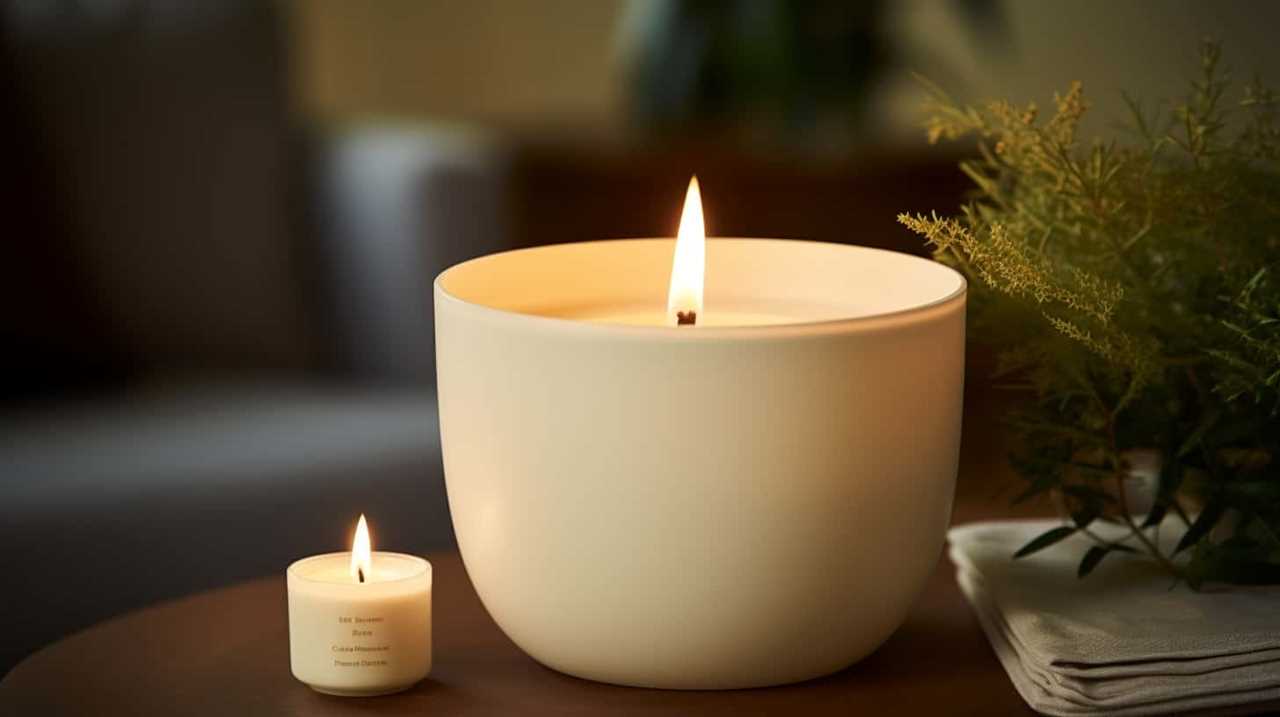
The handcrafted nature of these candles allows for exquisite attention to detail, resulting in captivating and visually stunning pieces.
The unparalleled artistic craftsmanship showcased in the intricate patterns, shapes, and textures of these candles truly sets them apart and adds a touch of sophistication to any space.
Handcrafted Masterpieces
With meticulous attention to detail, we create handcrafted masterpieces that boast unique and artistic designs. Our candles are more than just sources of light and fragrance; they’re works of art that elevate any space. Here’s what sets our handmade elegance apart:
- Artisanal Craftsmanship: Our candles are lovingly crafted by skilled artisans who take pride in their work. Each candle is carefully poured and finished by hand, ensuring a level of quality that mass-produced candles simply can’t match.
- Unique Designs: We believe that a luxury candle should be a statement piece, and our designs reflect that philosophy. From intricate patterns to bold color combinations, our candles are as visually stunning as they’re fragrant.
- Limited Editions: We understand the desire for exclusivity, which is why we offer limited edition collections. These one-of-a-kind candles are created in small batches, making them truly special and sought after.
Our commitment to handmade elegance and artisanal craftsmanship is evident in every aspect of our candles.

Now, let’s delve into the next section, where we explore the exquisite attention to detail that goes into our creations.
Exquisite Attention to Detail
We take great pride in meticulously crafting our luxury candles, paying exquisite attention to detail to ensure that each one boasts a unique and artistic design. Our hand poured technique and fine craftsmanship set us apart, allowing us to create candles that are not only functional but also works of art. We believe that every candle should be a reflection of elegance and beauty, and that is why we go above and beyond to create designs that are visually stunning and captivating. From intricate patterns to delicate textures, each candle is carefully crafted to create a truly exceptional piece. Our dedication to detail ensures that every customer receives a candle that is not only luxurious but also a true work of art.
| Column 1 | Column 2 | Column 3 |
|---|---|---|
| Meticulously crafted | Unique designs | Fine craftsmanship |
| Hand poured technique | Artistic | Intricate patterns |
| Exquisite attention to detail | Visually stunning | Delicate textures |
Unparalleled Artistic Craftsmanship
Our commitment to creating luxury candles of unparalleled artistic craftsmanship is evident in our unique and captivating designs. Each candle is meticulously and uniquely crafted, showcasing the expertise and creativity of our skilled artisans. Our designs aren’t just beautiful, but also thoughtfully created to evoke a sense of elegance and sophistication in any space.
Here are three reasons why our artistic craftsmanship sets us apart:

- Attention to detail: Every aspect of our candles, from the shape to the color, is carefully considered to ensure a harmonious and aesthetically pleasing design.
- Innovative techniques: We constantly push the boundaries of candle making by exploring new techniques and materials, resulting in one-of-a-kind designs that can’t be found elsewhere.
- Superior quality: Our commitment to excellence means that we only use the finest materials and employ the highest standards of craftsmanship, ensuring that each candle is of superior quality.
Our dedication to unparalleled artistic craftsmanship extends to our use of sustainable and eco-friendly materials, as we believe in creating luxury products that are both beautiful and responsible.
Sustainable and Eco-friendly Materials
The use of sustainable and eco-friendly materials is essential to crafting a luxury candle. We carefully select materials that are renewable, biodegradable, and ethically sourced. Our candles are made from natural waxes, such as soy or beeswax, which aren’t only better for the environment but also provide a cleaner and longer burn.
At our candle manufacturing facility, we prioritize sustainable manufacturing practices to minimize our environmental impact. We ensure that our packaging is eco-friendly, using recycled materials whenever possible and minimizing waste. We understand the importance of reducing our carbon footprint and strive to create candles that not only bring joy but also contribute to a healthier planet.
Luxurious Packaging
When it comes to luxurious packaging for candles, there are certain key elements that set them apart.

Elegant design elements, such as intricate patterns or embossed logos, create a sense of sophistication and exclusivity.
High-quality materials, such as heavyweight paper or satin ribbons, add a tactile experience that enhances the overall luxury.
Attention to detail in the form of hand-finished touches, like wax seals or custom-designed labels, further elevate the packaging and make it a true work of art.
Elegant Design Elements
We believe that incorporating elegant design elements, such as luxurious packaging, elevates a candle’s status to that of a luxury item. When it comes to elegant packaging, a minimalist design is often the key to creating a sophisticated and upscale feel.

Here are three ways in which elegant packaging enhances the luxury of a candle:
- Sleek and Minimalist Design: A simple and clean packaging design exudes elegance and refinement. It allows the candle itself to take center stage, showcasing its beauty and craftsmanship.
- High-Quality Materials: Luxury candles are often packaged using premium materials such as thick, textured paper, embossed logos, and metallic accents. These details add a touch of opulence and create a memorable unboxing experience.
- Attention to Detail: From the carefully selected color palette to the precise placement of branding elements, every aspect of the packaging is thoughtfully considered. This attention to detail enhances the overall luxurious feel of the candle and reflects the brand’s commitment to excellence.
High-Quality Materials
To achieve a luxurious packaging for a candle, it is essential to use high-quality materials. At our company, we prioritize high quality manufacturing and sustainable sourcing to create packaging that reflects the elegance and sophistication of our luxury candles. We understand that our discerning audience desires to serve others in the most exquisite way possible, and our packaging plays a crucial role in that experience. We carefully select materials that not only exude opulence but also align with our commitment to sustainability. From premium glass vessels to responsibly sourced paper and ribbons, every aspect of our packaging is thoughtfully chosen to ensure the highest level of quality and environmental consciousness. By using high-quality materials, we elevate the overall experience of our luxury candles, setting the stage for the attention to detail that awaits.
| High-Quality Materials | Luxurious Packaging |
|---|---|
| Premium glass vessels | Exquisite detailing |
| Responsibly sourced paper | Elegant ribbons |
| Sustainable materials | Embossed logos |
| High-quality printing | Intricate patterns |
| Luxurious finishes | Customized boxes |
Now, let’s delve into the next aspect of what makes a luxury candle: attention to detail.
Attention to Detail
Our commitment to excellence extends to the smallest details, ensuring that our luxury candles are packaged with meticulous care and precision. We understand that the packaging is just as important as the candle itself, as it sets the tone for the entire experience. That’s why we offer a range of customization options and personalized packaging to add that extra touch of luxury.
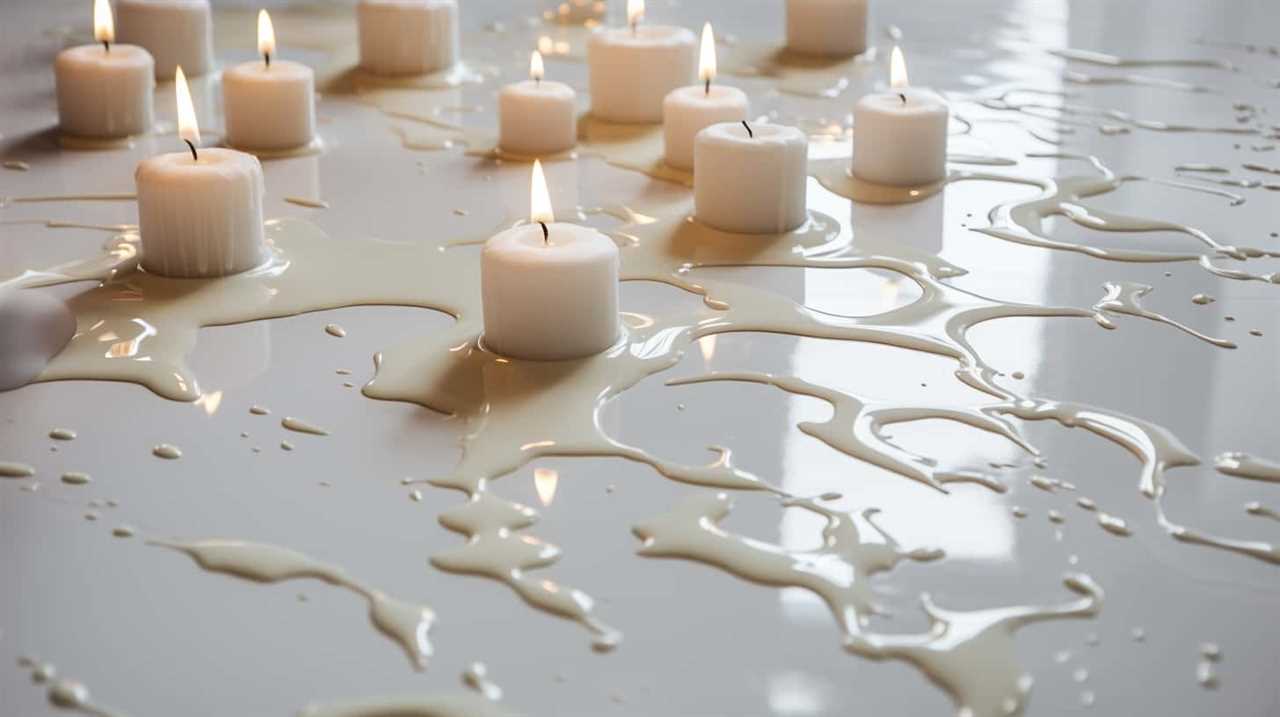
Here are three ways we pay attention to detail in our packaging:
- Customization options: We believe that every customer is unique, and their candle should reflect their individuality. That’s why we offer the option to customize the packaging with initials, monograms, or even personalized messages.
- Premium materials: We use only the finest materials for our packaging, ensuring that it not only looks luxurious but also provides protection for the candle inside. From elegant boxes to satin ribbons, every element is carefully selected to enhance the overall presentation.
- Thoughtful design: Our packaging is designed with both aesthetics and functionality in mind. We consider every aspect, from the size and shape of the box to the placement of the candle within. Attention to detail is key, as we strive to create an unboxing experience that’s as exquisite as the candle itself.
With our personalized packaging and meticulous attention to detail, we aim to exceed your expectations and deliver a truly luxurious experience from the moment you receive your candle.
Premium Wax Formulation
With meticulous attention to detail, our team crafts luxury candles using a carefully selected blend of premium waxes. We understand that the quality of wax used in a candle greatly affects its performance and overall experience. That’s why we spare no expense in sourcing the finest waxes available.
Our premium wax formulation ensures a clean and even burn, allowing the fragrance to fully bloom and fill your space with its aromatic notes. We believe that the combination of high-quality wax, infused with our premium fragrance oils, and paired with natural wick materials, creates a truly luxurious candle that surpasses expectations.

The harmonious blend of these elements guarantees an exceptional candle that not only serves as a stunning centerpiece but also elevates your sensory experience.
As we delve into the next section, let’s explore how our candles achieve an even and clean burning.
Even and Clean Burning
Crafting luxury candles involves achieving an even and clean burning, ensuring a truly indulgent experience for our customers. We understand that a clean flame and an even burn are essential for creating the perfect ambiance. Here are three reasons why even and clean burning is important:
- Superior fragrance diffusion: An even burn allows the fragrance to disperse uniformly throughout the room, creating a captivating and immersive atmosphere.
- Longer burn time: A clean flame ensures that the candle burns efficiently, maximizing its lifespan and providing hours of enjoyment.
- Minimal soot and residue: Our candles are meticulously crafted to minimize soot and residue, preventing any unwanted mess and ensuring a clean and elegant experience.
Intense Scent Throw
Achieving an intense scent throw is crucial for creating a truly luxurious candle experience. We understand that our discerning audience desires a candle that not only looks elegant but also fills the room with a captivating fragrance.
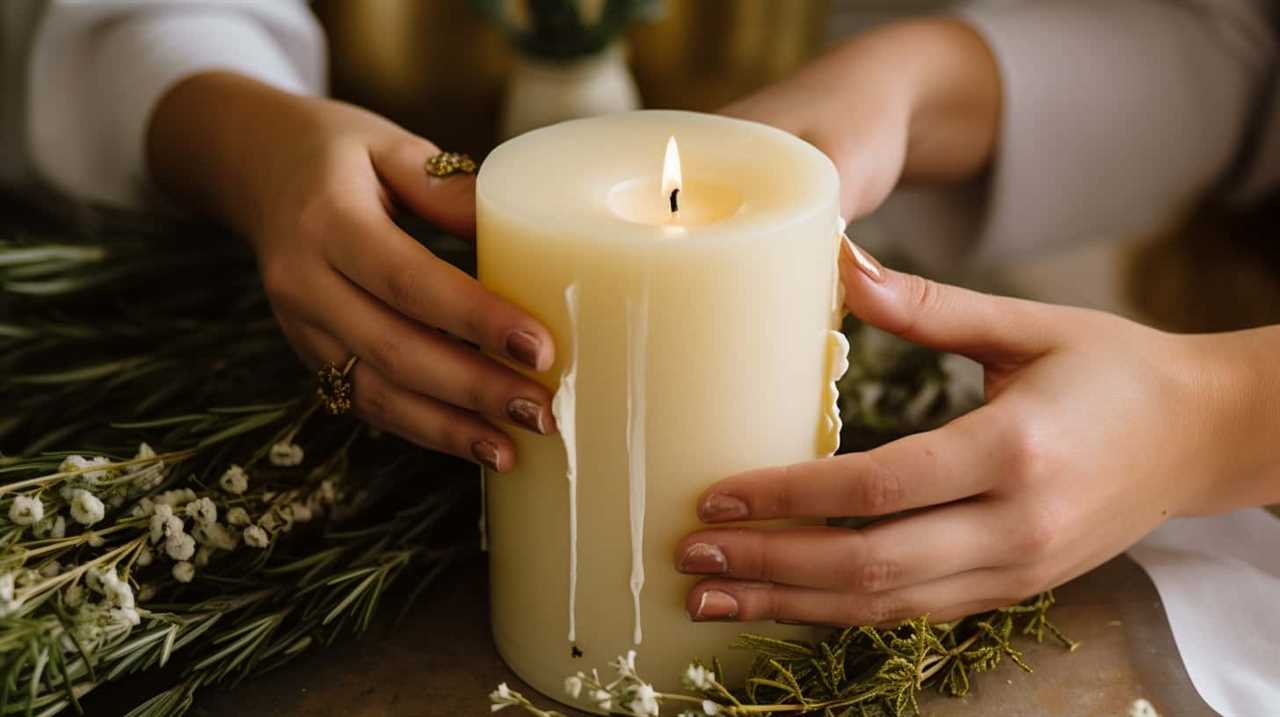
Our candles are carefully crafted to deliver an intense fragrance that envelops your space, creating a warm and inviting ambiance. We use premium quality fragrance oils that are expertly blended to ensure a long-lasting scent that lingers even after the flame has been extinguished.
Our commitment to excellence means that every candle is meticulously tested to guarantee an exceptional scent throw, allowing you to indulge in a sensory journey that’s both comforting and indulgent.
Experience the delight of a truly luxurious candle with our intense and long-lasting scents.
Customizable Options
We offer our discerning audience the opportunity to personalize their luxury candle experience with a range of customizable options. At our candle atelier, we understand that our clients value uniqueness and exclusivity. That’s why we’ve curated a selection of personalized options to ensure that each candle is a true reflection of their individual style and preferences.

Here are three ways in which our customers can customize their candles:
- Customizable Scents: Our master perfumers have created a diverse collection of exquisite scents, from delicate florals to rich woody notes. Clients can mix and match fragrances to create their own signature scent, tailored to their mood or occasion.
- Personalized Labels: We offer the option to add a personal touch to the candle labels. Whether it’s a special message, a monogram, or a custom design, our team will work closely with clients to create a label that’s truly unique and meaningful.
- Bespoke Containers: For those seeking the utmost luxury, we provide the opportunity to select custom containers for their candles. From hand-blown glass vessels to artisanal ceramic jars, our clients can choose the perfect vessel to complement their home decor and elevate their candle experience.
With our personalized options, we aim to create candles that not only illuminate spaces but also tell a story and evoke emotions. Because we believe that luxury isn’t just about the product, but also the experience.
Limited Edition Collections
Our limited edition collections feature unique candle designs and scents that captivate the senses and elevate the luxury candle experience. These limited edition exclusivities are highly sought after by candle enthusiasts and are often considered collectors’ items. Each collection is carefully curated to offer a one-of-a-kind experience, showcasing the artistry and craftsmanship of our brand. With a limited quantity available, these candles offer a sense of exclusivity and rarity, making them highly coveted among our discerning clientele. The table below provides a visual representation of our limited edition collections, highlighting the distinctive designs and scents that make them truly special.
| Collection Name | Design | Scent |
|---|---|---|
| Midnight Bliss | Hand-painted porcelain jar with gold accents | Sensual blend of jasmine, vanilla, and amber |
| Serene Gardens | Glass jar with intricate floral motif | Fresh notes of blooming lilacs and green tea |
| Enchanted Forest | Rustic wooden container with forest-inspired carving | Earthy blend of cedarwood, pine, and moss |
| Opulent Elegance | Crystal encrusted jar with a luxurious silver lid | Rich aroma of oud wood and black orchids |
As we embrace the limited edition collections, let us now delve into the world of expertly curated scents that further enhance the luxury candle experience.
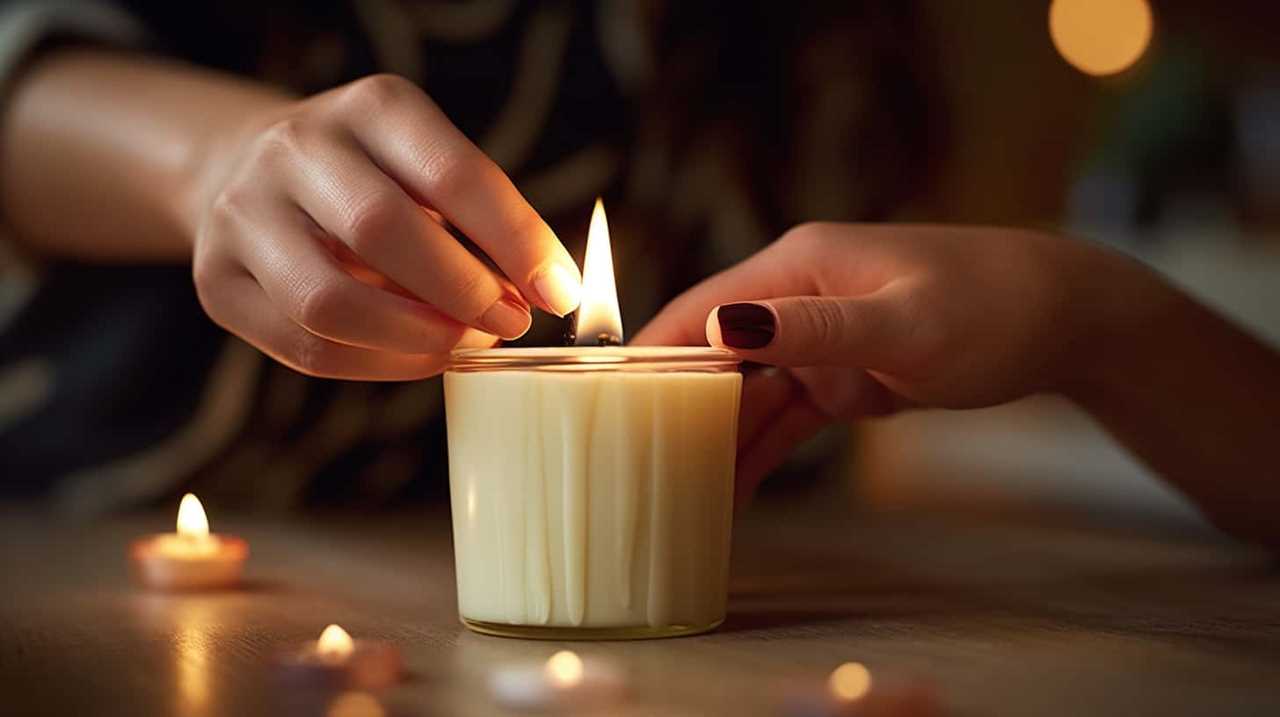
Expertly Curated Scents
To create a truly luxurious candle, it’s essential to curate scents with expert precision. Our team of fragrance specialists takes great care in selecting and blending the finest ingredients to create bespoke fragrances that will envelop your space in an exquisite aroma.
Here’s how we ensure our scents are truly exceptional:
- Meticulous Ingredient Selection: We source the highest quality essential oils, resins, and botanical extracts from around the world. Each ingredient is carefully chosen for its purity and olfactory impact, ensuring a superior scent experience.
- Artful Blending Techniques: Our perfumers skillfully combine these ingredients to create harmonious scent compositions. They understand the complexities of fragrance notes and use their expertise to balance and layer them in a way that evokes emotion and captivates the senses.
- Sensory Exploration: We believe in the power of scent to transport and transform. Our curated scents are crafted to take you on a sensory journey, whether it be to a tranquil garden, a cozy cabin, or a vibrant tropical paradise.
Attention to Detail
With meticulous attention to detail, we ensure that every aspect of our luxury candles is thoughtfully considered. From the selection of the finest ingredients to the exquisite packaging, our commitment to artisanal craftsmanship and sustainable practices shines through. Our candles are hand-poured by skilled artisans, who meticulously blend fragrances and pour the wax to create a perfectly balanced scent and a clean, even burn. We use only natural, sustainable materials, such as soy wax and lead-free cotton wicks, to ensure a healthier and eco-friendly experience. Our packaging is carefully designed to reflect the elegance and sophistication of our candles, using recycled materials whenever possible. Every step of our process is marked by our unwavering attention to detail, resulting in candles that are not only luxurious but also ethically crafted.
| Aspects of Attention to Detail | Description | Importance |
|---|---|---|
| Ingredient Selection | We carefully choose premium ingredients for our candles, ensuring the highest quality scents and materials. | Essential for creating luxurious and long-lasting fragrance experiences. |
| Quality Control | Each candle undergoes rigorous testing and inspection to guarantee consistent quality and performance. | Crucial in maintaining our commitment to excellence and customer satisfaction. |
| Presentation and Packaging | Our candles are meticulously packaged to reflect the elegance and luxury of the product. | Adds to the overall customer experience and makes our candles perfect for gifting. |
Exceptional Customer Experience
Having established our commitment to attention to detail, we consistently strive to provide an exceptional customer experience with our luxury candles. We understand that our customers not only desire high-quality products but also excellent service. Here’s how we ensure that every interaction with us is memorable:
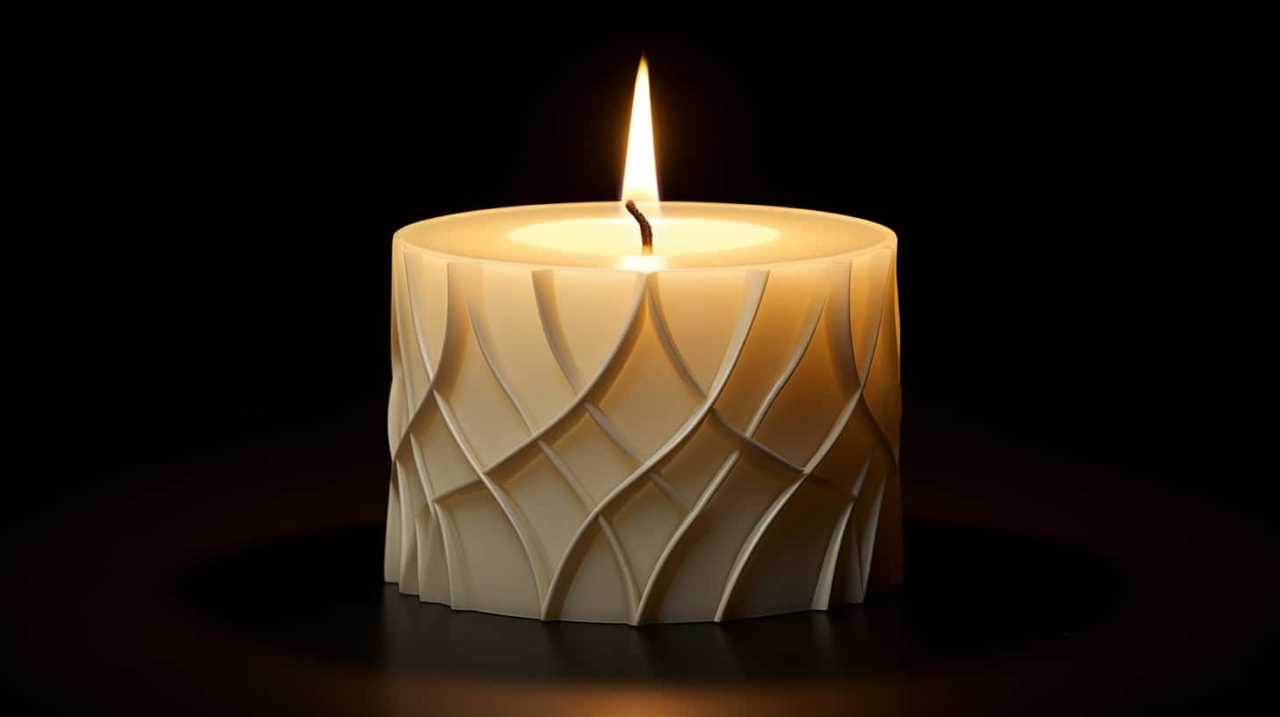
- Personalized Recommendations: We believe that every customer is unique, and we take the time to understand their preferences and needs. Our knowledgeable team is always ready to offer personalized recommendations to help our customers find the perfect luxury candle for any occasion.
- Seamless Online Shopping Experience: We know that convenience is important to our customers. That’s why we’ve invested in creating a user-friendly and intuitive online shopping platform. From easy navigation to secure payment options, we strive to make the online shopping experience seamless and enjoyable.
- Dedicated Customer Support: Our commitment to exceptional customer experience extends beyond the purchase. Our dedicated customer support team is available to address any queries, concerns, or issues that may arise. We value our customers’ satisfaction and will go above and beyond to ensure their happiness.
At [Company Name], we believe that serving our customers is a privilege, and we’re dedicated to providing an exceptional customer experience every step of the way.
Frequently Asked Questions
Can Luxury Candles Be Customized to Suit My Personal Preferences?
Yes, luxury candles can be customized to suit our personal preferences. We can choose the scent, color, and design, creating a unique sensory experience that reflects our individual taste and style.
Are There Any Limited Edition Collections Available for Purchase?
Limited edition candles and special edition collections are available for purchase. These exclusive offerings provide a unique and luxurious experience, showcasing exquisite craftsmanship and attention to detail. Elevate your space with these one-of-a-kind treasures.
What Steps Are Taken to Ensure That the Candle Burning Is Even and Clean?
To ensure clean burning and even distribution, we take meticulous steps in candle maintenance. Our luxury candles are crafted with the finest ingredients and designed with precision, resulting in an exquisite experience for our discerning customers.
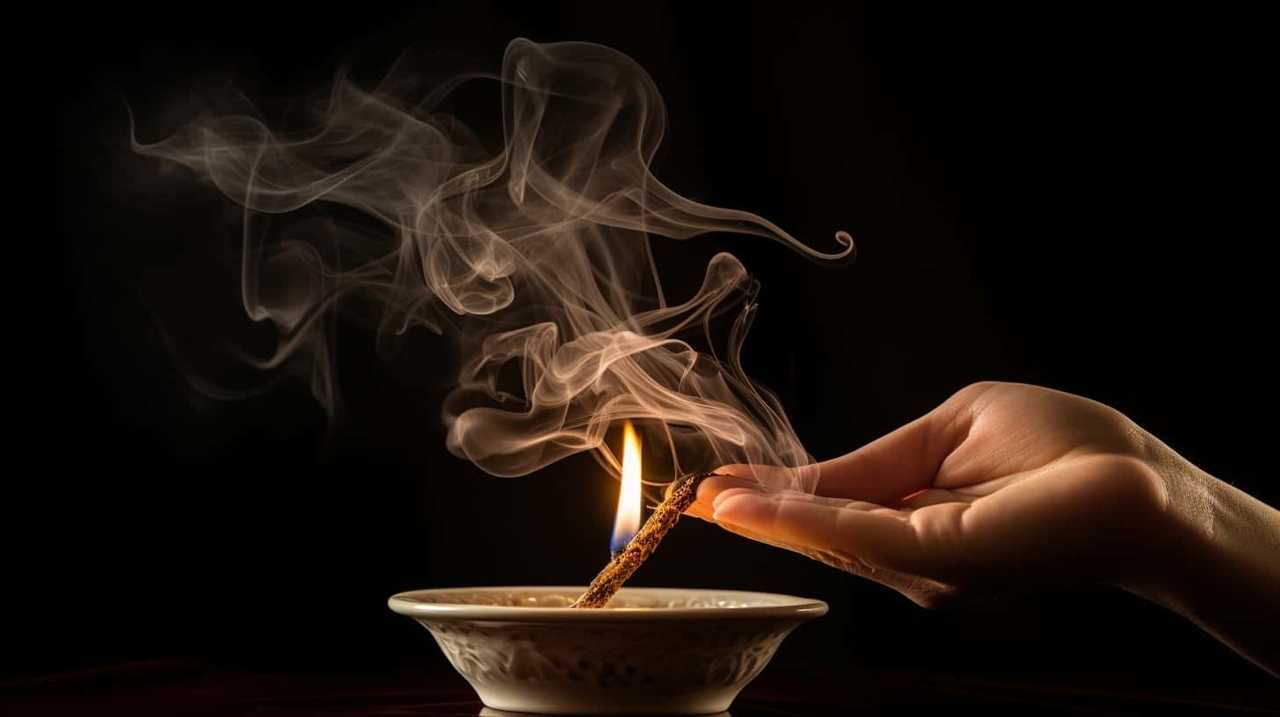
Can You Tell Me More About the Sustainable and Eco-Friendly Materials Used in the Production of Luxury Candles?
At our company, we prioritize sustainability and eco-friendly production. We source our materials from renewable sources, such as soy wax and organic essential oils. Our commitment to the environment sets us apart in the luxury candle industry.
How Does the Brand Create an Exceptional Customer Experience When Purchasing Their Luxury Candles?
Exceptional customer service is at the heart of our brand. We strive to create a memorable experience by providing personalized recommendations and addressing any concerns. Our unique packaging adds an extra touch of luxury and sophistication to the purchasing process.
Conclusion
In the world of luxury candles, it’s the meticulous attention to detail that sets them apart. From the high-quality ingredients to the exquisite fragrances, each element is carefully chosen to create a sensory experience like no other.
Handcrafted with care and boasting long-lasting burn times, these candles aren’t just ordinary objects, but works of art. With unique designs and limited edition collections, they offer an exclusive and exceptional customer experience.

Indulge in the world of luxury candles and elevate your space to a new level of sophistication.
I’m Jane and I love candles. I have candles everywhere in my house–in every room, on every surface. I love the smell of candles, and I love how they make my place feel warm and cozy.
Candles are really important to me. They help me relax and de-stress after a long day. They remind me of happy memories, and they make me feel calm and peaceful. I can’t imagine my life without candles!
Candles
What Makes a Good Candle

Have you ever thought about what sets apart a high-quality candle from the average ones? Let me shed some light on this topic.
When it comes to creating a warm and inviting atmosphere, a good candle can make all the difference. It’s not just about the flickering flame, but also the quality of the wax, the fragrance options, and the burn time.
We believe in serving others by providing candles that not only smell amazing but also burn clean and evenly. Safety is a top priority, so we ensure our candles are made with high-quality wicks and come in safe packaging. And for those who care about the environment, we offer eco-friendly options.
At the end of the day, it’s about providing value for your money and creating a memorable experience.
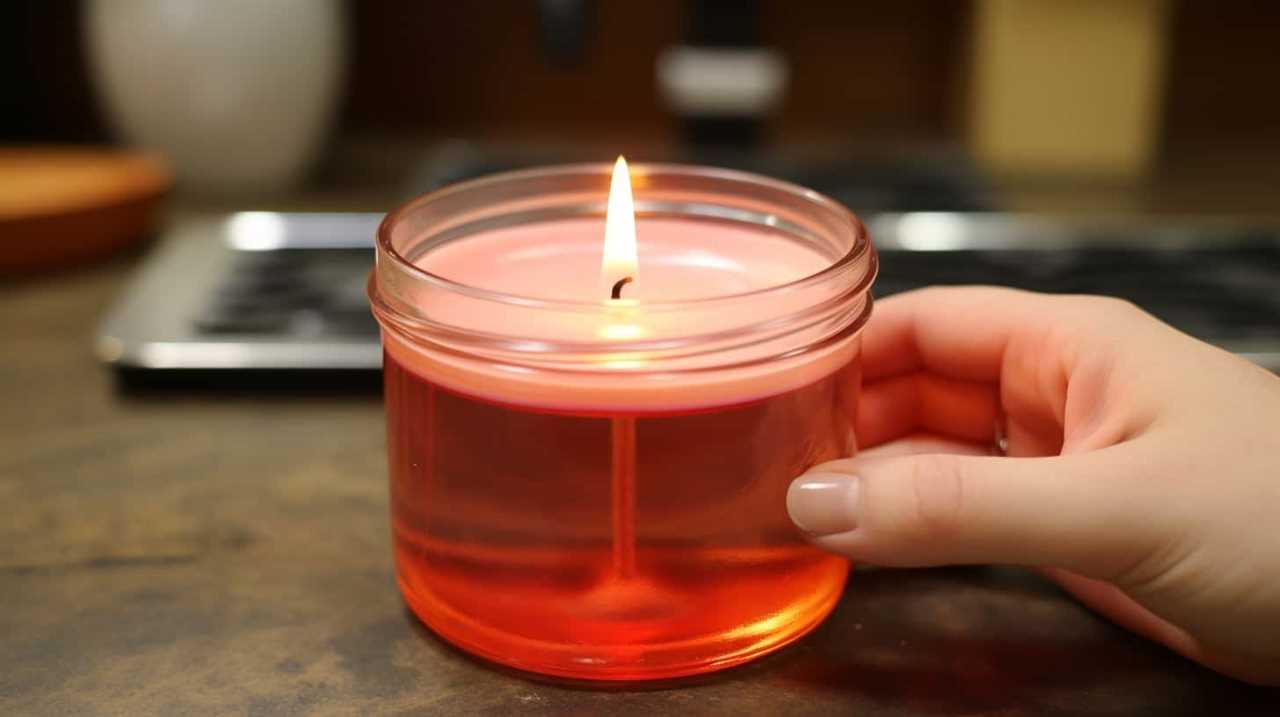
Key Takeaways
- The choice of wax, such as soy or beeswax, can impact the burn time, scent throw, and environmental impact of a candle.
- Customizable fragrance blends, such as citrus and herb or floral and fruity, offer a variety of aromas to suit different preferences.
- The quality and performance of the wick, including proper trimming and choosing the right size, are crucial for a consistent and safe burn.
- Burn time, clean burns, and safety measures, such as trimming the wick, avoiding drafts, and using non-toxic ingredients, contribute to a longer-lasting and enjoyable candle experience.
Types of Wax
When it comes to determining what makes a good candle, one important aspect to consider is the type of wax used. There are several different wax types available, each with its own set of pros and cons.
One such type is soy wax, which has gained popularity in recent years due to its natural and renewable properties. One of the main advantages of soy wax is its clean burn, as it produces minimal soot and smoke. It also has a longer burn time compared to other waxes, making it more cost-effective. Additionally, soy wax is derived from soybeans, making it a sustainable and eco-friendly choice.
However, soy wax tends to have a softer consistency and may not hold fragrance as well as other waxes.
Fragrance Options
When it comes to fragrance options, we’re spoiled for choice. Popular scent choices like vanilla, lavender, and citrus can create a soothing or invigorating atmosphere in any room.

But what sets good candles apart is the ability to customize fragrance blends, allowing you to create a unique scent that suits your preferences perfectly.
And let’s not forget about long-lasting aromatic options that fill your space with delightful fragrance for hours on end.
Popular Scent Choices
Our favorite scents for candles include lavender, vanilla, and citrus. These popular fragrance choices not only create a pleasant ambiance but also offer various benefits for our well-being. Lavender is known for its calming properties, perfect for creating a soothing atmosphere for relaxation and sleep. Vanilla, with its warm and comforting aroma, adds a touch of sweetness and warmth to any space. Citrus scents, such as orange or lemon, invigorate the senses and bring a refreshing burst of energy. To help you choose the right candle fragrance for your needs, here is a table showcasing the different characteristics of these popular scent choices:
| Scent | Benefits | Best Use |
|---|---|---|
| Lavender | Calming | Bedroom, meditation |
| Vanilla | Comforting | Living room, kitchen |
| Citrus | Energizing | Office, bathroom |
With these fragrance options, you can create a welcoming and relaxing environment that caters to your specific desires.

Customizable Fragrance Blends
What customizable fragrance blends can we explore to create unique and personalized candle scents? When it comes to creating candles with customizable scent profiles, the options are endless. By blending different fragrance oils, we can create a range of captivating aromas that cater to individual preferences.
Here are four fragrance options to consider:
- Citrus and Herb: A refreshing blend of zesty citrus notes and aromatic herbs, perfect for those who enjoy a clean and invigorating scent.
- Floral and Fruity: This combination of delicate floral aromas and juicy fruits creates a romantic and uplifting ambiance, ideal for those with a love for all things sweet and floral.
- Woodsy and Spicy: For a warm and cozy atmosphere, try blending earthy wood tones with hints of spicy notes. This fragrance profile appeals to those who appreciate a touch of depth and complexity.
- Fresh and Clean: A simple yet timeless choice, a blend of crisp and clean scents like linen and cotton creates an ambiance of purity and tranquility.
Long-Lasting Aromatic Options
To explore long-lasting aromatic options, we can delve into a variety of fragrance choices that enhance the overall candle experience. Opting for high-quality fragrances made from sustainable materials ensures a longer-lasting and more eco-friendly candle experience. These fragrances not only provide a pleasant scent but also contribute to creating a soothing and inviting ambiance.
When it comes to selecting fragrances for candles, it’s important to consider both the scent’s longevity and its impact on candle safety. By prioritizing candle safety, we can enjoy the aromatic benefits without compromising on the well-being of ourselves and our surroundings.
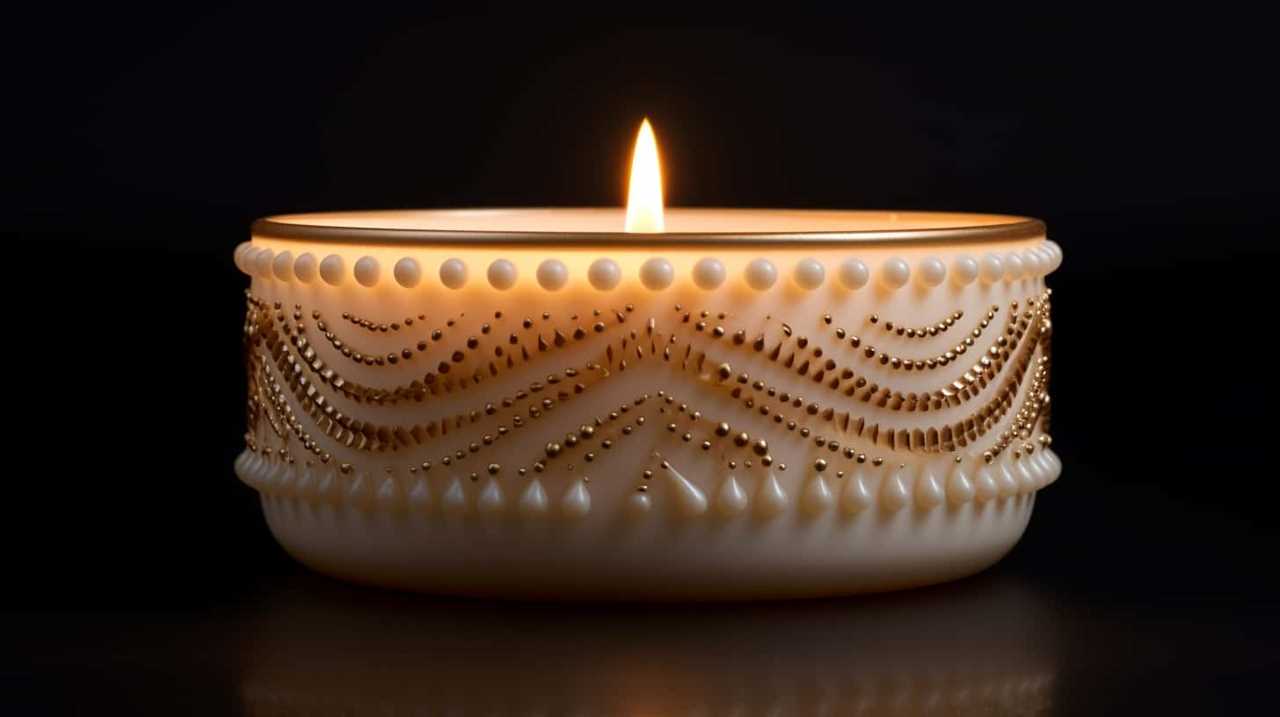
Now that we’ve explored the importance of long-lasting aromatic options, let’s move on to the next essential aspect of a good candle: wick quality.
Wick Quality
When it comes to creating a good candle, the quality of the wick is paramount. The length of the wick plays a crucial role in how the candle burns, ensuring a consistent and even flame.
Additionally, the material of the wick is important to consider, as it affects the burn time and performance of the candle.
Importance of Wick Length
As we delve into the topic of the importance of wick length (wick quality), it becomes evident that selecting the appropriate length plays a crucial role in achieving a well-performing and long-lasting candle. Here are four reasons why wick length is essential:

- Wick maintenance: The length of the wick determines how efficiently the candle burns. If the wick is too long, it may produce excessive soot or smoke, leading to poor air quality. On the other hand, if the wick is too short, the flame may struggle to stay lit.
- Candle aesthetics: The length of the wick also affects the way the candle looks when lit. A properly trimmed wick will create a steady, even flame that enhances the overall ambiance of the candle.
- Burn time: The length of the wick can impact the burn time of the candle. A longer wick may burn the candle faster, while a shorter wick may prolong the burn time.
- Safety: Choosing the right wick length is crucial for ensuring the safety of the candle. A wick that’s too long can cause the flame to become too high, increasing the risk of fire hazards.
Wick Material Considerations
We prioritize the selection of high-quality wick materials to ensure the overall performance and longevity of our candles. The choice of wick material plays a crucial role in determining the quality and effectiveness of a candle.
One of the key benefits of using high-quality wick materials is that they burn evenly and consistently, providing a steady flame throughout the candle’s lifespan. This not only enhances the visual appeal of the candle but also ensures optimal fragrance release. Additionally, high-quality wick materials are less likely to produce excess smoke or soot, creating a cleaner and healthier burning experience.
Furthermore, the size of the wick is equally important. A properly sized wick ensures that the candle burns evenly, without tunneling or excessive wax build-up. By carefully considering both the wick material and size, we can create candles that offer exceptional performance and long-lasting enjoyment for our customers.
Wick Performance and Burn
To ensure the wick performance and burn of our candles, we carefully select high-quality materials. We understand the importance of a well-performing wick in creating a delightful candle experience for our customers. Here are some key factors that contribute to the wick performance and burn:
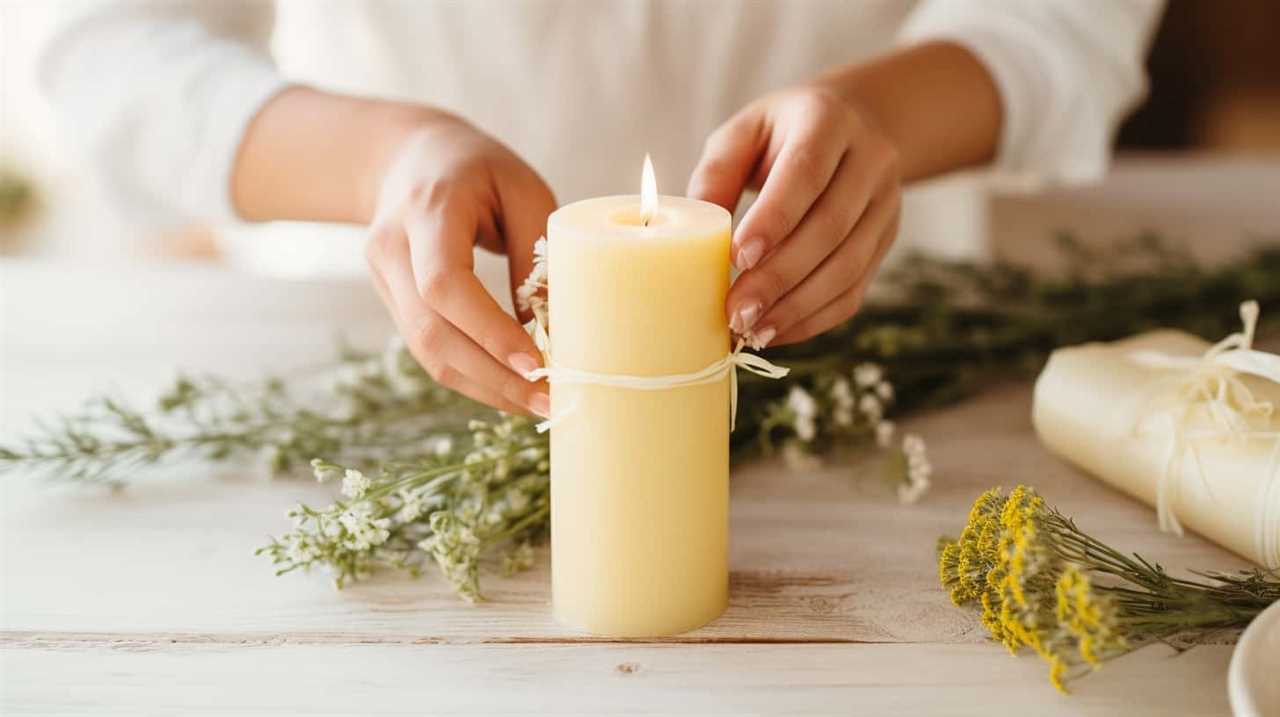
- Wick maintenance: Regularly trimming the wick to about 1/4 inch before each use helps to prevent excessive smoking and mushrooming, ensuring a clean and even burn.
- Proper candle accessories: Using tools like wick trimmers and snuffers can aid in maintaining the wick’s performance and prolong the life of your candle.
- Wick size selection: Choosing the right wick size for each candle ensures optimal burn performance and prevents issues like tunneling or uneven melting.
- High-quality wick materials: We use only the finest cotton and natural fibers in our wicks, which provide a steady and consistent burn throughout the candle’s lifespan.
Burn Time
The burn time of a good candle is an important factor to consider when selecting a candle for purchase. It refers to the length of time the candle will burn before it’s completely consumed. A longer burn time means more value for your money and a longer-lasting fragrance in your space.
The burn rate of a candle can vary depending on factors such as the type of wax used, the size of the candle, and how well it’s cared for. To ensure a longer burn time, it’s essential to properly trim the wick before each use, keep the candle away from drafts, and allow it to burn for a sufficient amount of time during each use.
By following these candle care practices, you can enjoy a longer burn time and maximize the longevity of your candles.
As we move into the next section on clean, even burns, it’s important to note that burn time is closely related to the overall quality of the candle.

Clean, Even Burns
Achieving a clean, even burn is essential for a good candle, ensuring optimal fragrance release and a longer-lasting candle experience. Here are four key factors that contribute to clean, even burns:
- Quality wick: A properly sized wick is crucial for an even burn. It should allow for a consistent flame size and prevent tunneling.
- Evenly distributed flames: A well-designed candle will have multiple wicks or a large enough wick to create evenly distributed flames. This helps to prevent uneven melting and ensures that all the wax is used.
- Non-toxic ingredients: Using high-quality, non-toxic ingredients is important for a clean burn. Inferior materials can produce excessive soot, smoke, and unpleasant odors.
- Proper candle care: Trim the wick to 1/4 inch before each use and keep the candle away from drafts to maintain an even burn.
By following these guidelines, you can enjoy a clean, even burn and enhance your candle experience.
Now, let’s move on to discussing the necessary safety measures.
Safety Measures
For a good candle, ensuring safety measures is of utmost importance. Fire prevention and proper handling are key aspects to consider when enjoying the warm glow of a candle.

To ensure a safe and enjoyable experience, here are some essential safety tips:
- Always trim the wick to ¼ inch before lighting to prevent excessive flames and soot buildup.
- Place candles on a heat-resistant surface and keep them away from flammable objects.
- Never leave a burning candle unattended or within the reach of children or pets.
- Avoid burning candles near drafts or open windows to prevent accidental fires.
- Extinguish candles before going to bed or leaving the room to prevent any potential accidents.
Packaging and Presentation
Now let’s move on to the next important aspect of a good candle – how it’s packaged and presented. Packaging design plays a crucial role in catching the attention of customers and conveying the essence of the brand. To ensure a successful presentation, consider the following branding strategies:
- Eye-catching design: A visually appealing packaging design can make a candle stand out on the shelves and attract potential buyers. Incorporate unique shapes, bold colors, and elegant finishes to create a memorable impression.
- Clear branding: The packaging should clearly communicate the brand’s identity and values. Utilize logos, slogans, and consistent color schemes to establish a strong brand presence and build customer loyalty.
- Functional features: Practical aspects, such as easy-to-open boxes or protective sleeves, enhance the overall customer experience. Thoughtful packaging design can make a candle feel more luxurious and increase perceived value.
- Sustainable materials: In today’s eco-conscious world, using environmentally friendly packaging materials can help differentiate a brand and appeal to environmentally conscious customers.
Eco-Friendly Options
Let’s explore eco-friendly options for packaging and presenting candles.
In today’s world, where sustainability is a priority, it’s essential to choose candles that are produced with sustainable production methods and made from renewable resources. Opting for candles that are sustainably produced ensures that they’re manufactured in a way that minimizes harm to the environment. Look for candles that use natural waxes, such as soy or beeswax, as these are renewable resources that can be replenished.

Additionally, consider candles that come in packaging made from recycled materials or are biodegradable. By choosing eco-friendly candles, we can make a conscious effort to protect our planet while still enjoying the warm glow and delightful scents that candles bring to our lives.
Now, let’s explore how to find candles that offer value for money.
Value for Money
After considering eco-friendly options for packaging and presenting candles, we can now delve into the important aspect of value for money. When it comes to purchasing candles, it’s essential to find a product that not only offers a beautiful aesthetic but also provides a delightful sensory experience.
Here are four key factors to consider when assessing the value for money of a candle:

- Longevity: A good candle should have a burn time that justifies its price, allowing you to enjoy its fragrance and ambiance for hours on end.
- Quality Ingredients: Look for candles made with high-quality, natural ingredients that ensure a clean and even burn, maximizing the lifespan of the candle.
- Scent Throw: A well-designed candle should offer a strong and consistent scent throw, filling your space with its captivating fragrance.
- Packaging: Consider the packaging of the candle, ensuring it not only protects the product but also complements its overall aesthetic, adding value to your purchase.
Frequently Asked Questions
How Do I Choose the Right Candle Scent for My Home?
Choosing the perfect fragrance for your home can create a cozy ambiance. Consider scents that evoke positive emotions and complement your decor. Experiment with different fragrances to find the one that brings you joy and relaxation.
Can I Use a Candle With a Shorter Burn Time for Shorter Periods of Time?
We can use a candle with a shorter burn time for shorter periods. However, it’s important to consider the effectiveness of the candle. A good candle should still provide a strong scent and long-lasting ambiance, even with a shorter burn time.
Are There Any Safety Precautions I Should Take When Burning a Candle?
When it comes to candle safety, there are a few precautions we should always take. Keep the candle away from flammable materials, never leave it unattended, and ensure it’s placed on a stable surface. These candle burning tips can help prevent accidents.
What Are Some Eco-Friendly Options for Candle Materials?
Sustainable wax alternatives and natural dyes are essential for eco-friendly candles. These options not only contribute to a healthier environment but also provide numerous benefits, like cleaner air and supporting local communities.

How Can I Ensure That the Candle I Purchase Offers Good Value for Money?
When it comes to candle quality, we’ve learned that price is not always the best indicator. To ensure good value for money, we recommend thorough candle price comparison and considering factors like burn time and fragrance intensity.
Conclusion
In conclusion, creating a captivating candle experience involves the meticulous selection of wax, fragrance, wick quality, burn time, and safety measures.
The packaging and presentation should be aesthetically pleasing, while eco-friendly options add a touch of responsibility to the mix.
And of course, the value for money should be evident.
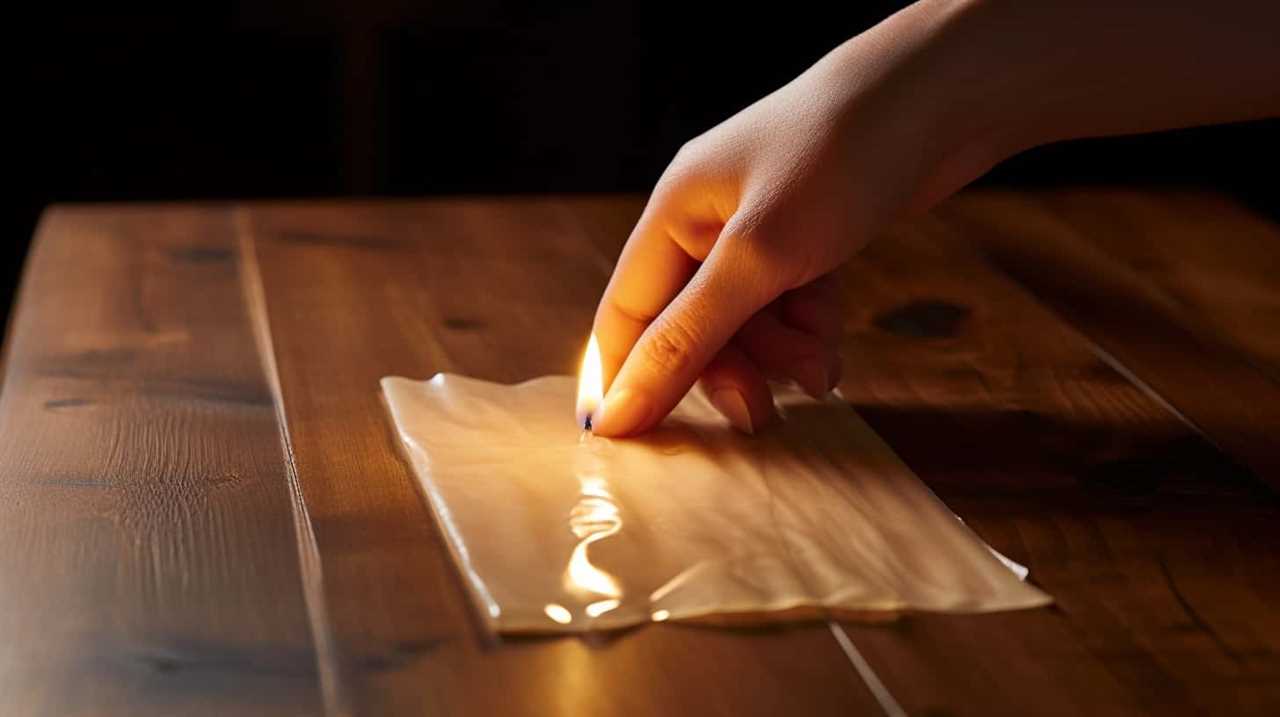
By carefully considering these factors, we can ensure that every moment spent in the tranquil glow of a candle is a truly delightful and enchanting experience.
I’m Jane and I love candles. I have candles everywhere in my house–in every room, on every surface. I love the smell of candles, and I love how they make my place feel warm and cozy.
Candles are really important to me. They help me relax and de-stress after a long day. They remind me of happy memories, and they make me feel calm and peaceful. I can’t imagine my life without candles!
Candles
What Is the Song Candle in the Wind About

Have you ever thought about the true significance of the song ‘Candle in the Wind’? Let’s explore the heart of this iconic ballad together.
This song has captivated hearts and minds for decades, and today, we aim to uncover its meaning and significance. As we delve into the background, inspiration, and historical context of the song, we’ll also explore Elton John’s personal connection to it. Moreover, we’ll discover the emotional response it has evoked from fans all around the world.
We’ll also touch upon the various covers and adaptations, controversies and criticisms, and the profound influence ‘Candle in the Wind’ has had on Elton John’s career.
So, join us on this journey as we unravel the mystery behind this timeless masterpiece.

Key Takeaways
- "Candle in the Wind" was originally written as a tribute to Marilyn Monroe, but was later adapted and dedicated to Princess Diana after her death in 1997. It captures the essence and impact of these beloved figures and resonates with listeners on a profound level.
- The symbolism and meaning of the song revolve around the candle as a symbol of light in the darkness, representing hope, guidance, and the memory and legacy of the person being honored. The flickering flame also represents the fragility and fleeting nature of life, evoking emotions of love, loss, and the power of memory.
- The song’s historical context and cultural significance are reflected in its release in 1973 and its prominence in 1997. It tapped into collective mourning and grief for Princess Diana, becoming a symbol of tribute and remembrance. It reminds us of the impact one person can have on the world and captures a specific moment in history.
- Elton John’s personal connection to the song, his experience with fame, isolation, and the pressures of public life, and his recognition of its universal appeal led him to rewrite the lyrics as a tribute to Princess Diana. The tribute version had significant musical differences and had a powerful impact on the audience, becoming one of the best-selling singles of all time and sparking debates about the boundaries of art and public mourning.
The Background of ‘Candle in the Wind
The background of ‘Candle in the Wind’ is revealed by exploring the inspirations and events that shaped the iconic song.
Released in 1973, the song was written by Elton John and Bernie Taupin as a tribute to Marilyn Monroe. However, it was later reworked and dedicated to Princess Diana after her tragic death in 1997.
The song’s popularity skyrocketed after its performance at Princess Diana’s funeral, becoming one of the best-selling singles of all time.
‘Candle in the Wind’ carries a powerful message of loss, remembrance, and the fleeting nature of fame. It serves as a poignant reminder of the impact that individuals can have on the world, even long after they’re gone.
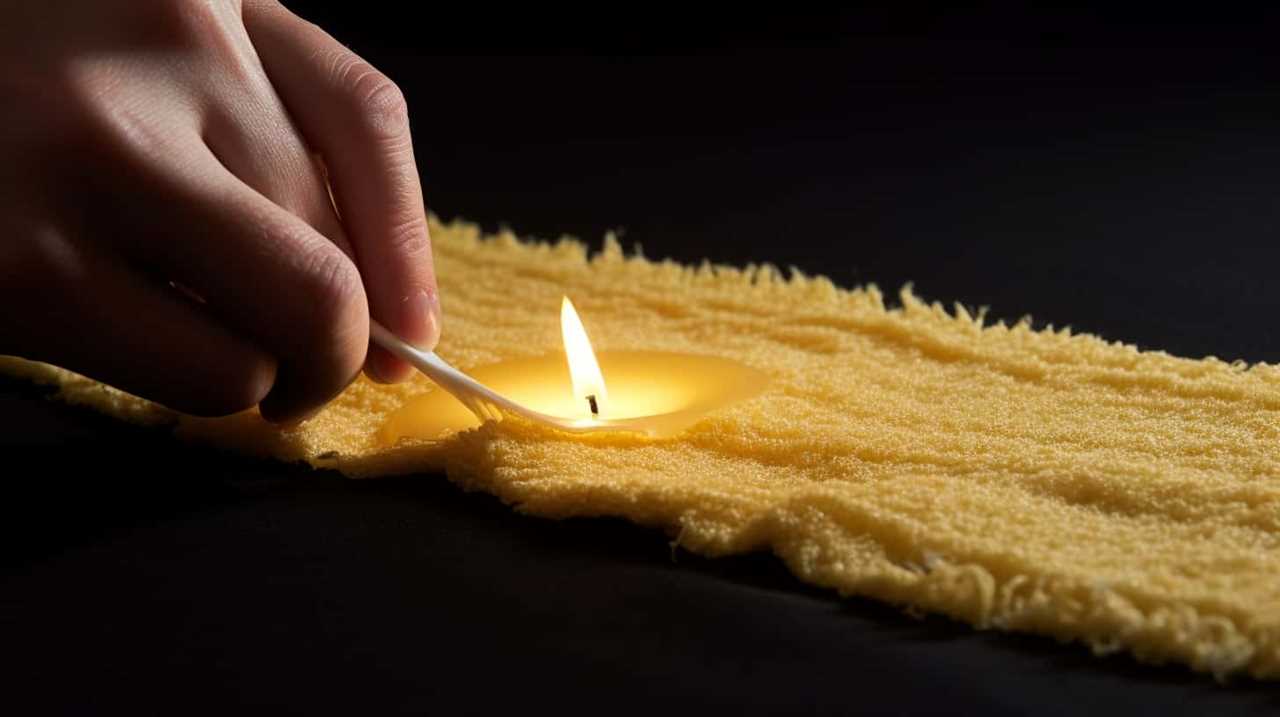
The song’s emotional resonance and universal themes continue to resonate with audiences, making it a timeless classic.
The Inspiration Behind the Lyrics
Our deep admiration for Marilyn Monroe and the tragic loss of Princess Diana inspired the heartfelt lyrics of ‘Candle in the Wind’. This iconic song, originally written as a tribute to Monroe, was later adapted and dedicated to Princess Diana after her untimely death in 1997. The historical inspiration behind the lyrics is evident in the way the song captures the essence of these beloved figures and the impact they had on the world. The emotional resonance of ‘Candle in the Wind’ lies in its ability to express both grief and admiration, connecting with listeners on a profound level. Through its poignant lyrics and haunting melody, the song serves as a timeless reminder of the fragility of life and the enduring legacy of those who are no longer with us.
| Historical Inspiration | Emotional Resonance | Impact on Audience |
|---|---|---|
| Marilyn Monroe | Grief and admiration | Profound connection |
| Princess Diana | Fragility of life | Enduring legacy |
Significance of the Candle Symbol
To understand the significance of the candle symbol in the song ‘Candle in the Wind,’ we must delve into its powerful symbolism and the emotions it evokes.
The candle holds a deep and universal symbolic meaning across cultures. It represents light in the darkness, hope in times of despair, and a guiding force in uncertain times.
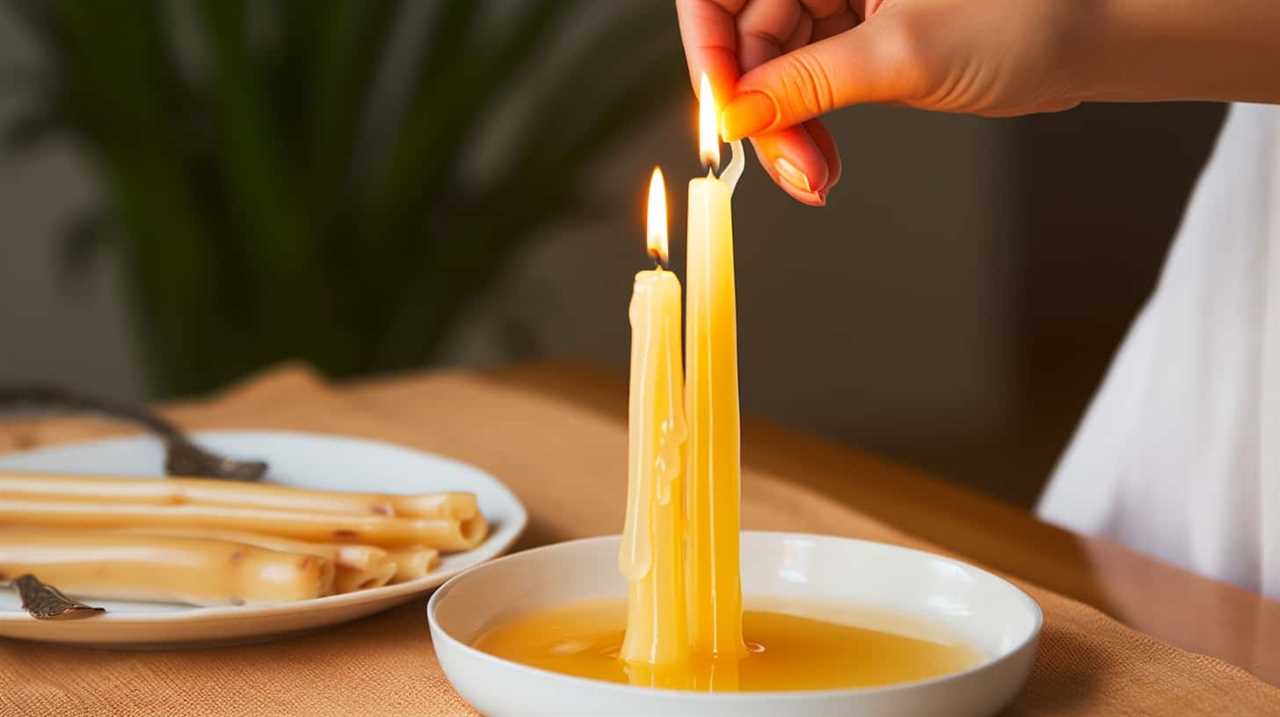
In the context of the song, the candle symbolizes the memory and legacy of the person being honored. It serves as a metaphor for their enduring impact and the light they brought into the world.
The flickering flame of the candle also captures the fragility and fleeting nature of life, reminding us to cherish every moment.
Through this cultural interpretation, the candle symbol in ‘Candle in the Wind’ becomes a poignant and evocative representation of love, loss, and the enduring power of memory.
Historical Context of the Song
The historical context of the song ‘Candle in the Wind’ holds immense cultural significance and impact.
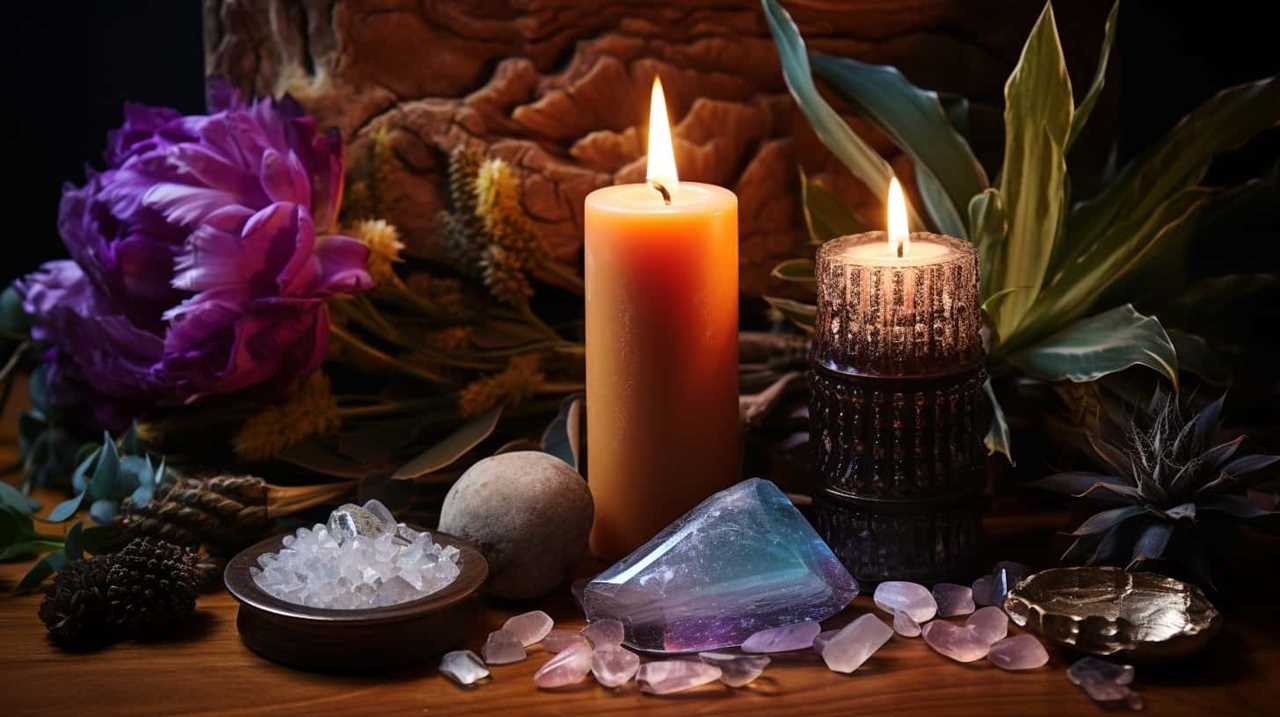
Released in 1973 by Elton John, the song was originally written as a tribute to Marilyn Monroe but gained even more prominence when it was reworked as a tribute to Princess Diana after her tragic death in 1997.
This shift in subject matter not only reflected the changing times but also highlighted the universal themes of loss, fame, and the human condition, making the song relevant and resonant in modern times.
Cultural Significance and Impact
When examining the cultural significance and impact of the song ‘Candle in the Wind,’ it becomes apparent that its historical context is crucial in understanding its profound resonance. This iconic song, originally released in 1973 by Elton John and later re-released in 1997 as a tribute to Princess Diana, holds immense cultural value.
Here are three key reasons why:
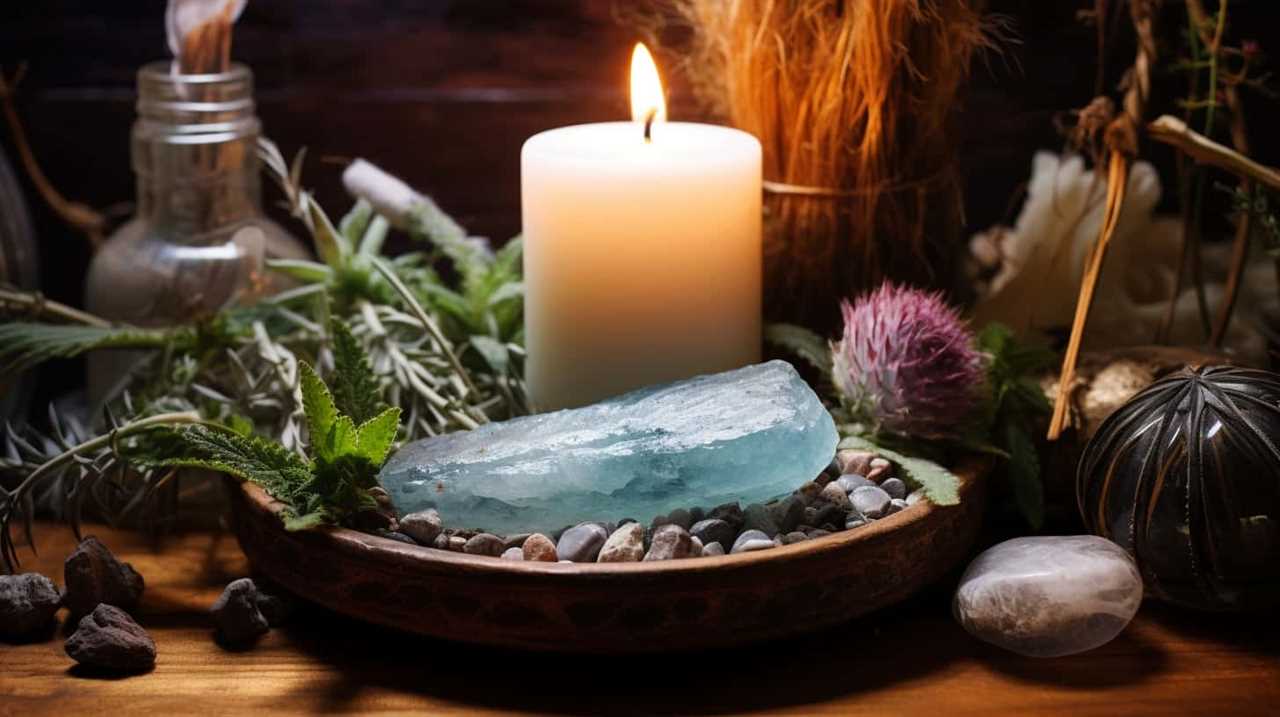
- Emotional connection: The song’s heartfelt lyrics and poignant melody resonated deeply with listeners, allowing them to connect emotionally with the message of loss and grief.
- Societal impact: By choosing to dedicate the song to Princess Diana, Elton John tapped into the collective mourning and grief felt by millions worldwide, turning it into a symbol of tribute and remembrance.
- Historical relevance: ‘Candle in the Wind’ not only captured the essence of a specific moment in history but also became a powerful anthem that transcended time, reminding us of the fragility of life and the impact one person can have on the world.
Relevance in Modern Times
In our modern times, the song ‘Candle in the Wind’ continues to hold significant relevance due to its historical context and the lasting impact it has had on popular culture.
This iconic song, originally written and performed by Elton John in 1973 as a tribute to Marilyn Monroe, has been adapted over the years to honor other influential figures, such as Princess Diana.
The modern interpretations of this song reflect the ongoing fascination with larger-than-life individuals and the emotions they evoke in society. ‘Candle in the Wind’ remains relevant to current events as it captures the essence of grief, loss, and the enduring impact of iconic personalities.
Its heartfelt lyrics and powerful melody resonate with audiences, reminding us of the universal experiences of love, fame, and tragedy.

As we continue to navigate through the complexities of our world, this timeless song provides solace and reflection, making it a valuable piece of our cultural fabric.
Elton John’s Personal Connection
Elton John has always felt a deep personal connection to the song Candle in the Wind. This emotional bond stems from several factors:
- Tribute to Princess Diana: Elton John rewrote the lyrics of Candle in the Wind as a tribute to his dear friend, Princess Diana, after her tragic death in 1997. This heartfelt gesture resonated with fans worldwide, who also mourned the loss of the beloved princess.
- Reflecting on personal struggles: The song’s lyrics touch upon themes of fame, isolation, and the pressures of public life. As someone who’s experienced these challenges firsthand, Elton John’s personal connection to the song’s message is profound.
- Universal resonance: Beyond his own experiences, Elton John recognizes the universal appeal of Candle in the Wind. Its ability to evoke empathy and stir emotions in listeners has made it an enduring anthem, creating a powerful emotional response from fans across generations.
Through his personal connection to the song, Elton John hasn’t only touched the hearts of millions but also used his platform to serve others by honoring Princess Diana’s memory and addressing the complexities of fame.
The Original Version Vs. the Princess Diana Tribute
When comparing the original version of ‘Candle in the Wind’ to the Princess Diana tribute, several points arise.

Firstly, there are notable musical differences and changes, such as alterations in the lyrics and instrumentation.
Secondly, the impact on the audience is significant, as the tribute version resonated deeply with people around the world, becoming one of the best-selling singles of all time.
Lastly, the contextual significance and controversy surrounding the tribute version add another layer to the discussion, as it was released in the aftermath of Princess Diana’s tragic death and sparked debates about the boundaries of art and public mourning.
Musical Differences and Changes
During the tribute to Princess Diana, we made several musical changes and differences to the original version of the song Candle in the Wind. These alterations were aimed at capturing the essence of Princess Diana’s life and impact on the world.

Here are three key differences that were made:
- Lyrics: We revised the lyrics to pay homage to Princess Diana, highlighting her grace, compassion, and untimely departure. The new lyrics resonated deeply with fans, as they felt a personal connection to the Princess and her story.
- Instrumentation: We incorporated orchestral elements to create a more emotional and poignant sound. The addition of strings and piano added a sense of grandeur and melancholy, perfectly reflecting the somber mood of the tribute.
- Vocals: The original version was re-recorded with a more heartfelt and vulnerable vocal performance. This allowed the audience to feel the raw emotions and grief associated with Princess Diana’s tragic death.
These changes in the musical arrangement of Candle in the Wind helped to elevate the tribute to Princess Diana, creating a powerful and moving experience for fans around the world.
Impact on Audience
We were amazed by the overwhelming emotional response the Princess Diana tribute version of ‘Candle in the Wind’ elicited from the audience.
The song, originally written as a tribute to Marilyn Monroe, took on a new meaning when it was performed at Princess Diana’s funeral in 1997.

The emotional resonance of the lyrics, combined with Elton John’s heartfelt delivery, struck a chord with fans around the world.
Fan testimonials poured in, expressing how deeply they were moved by the song. Many described it as a cathartic experience, allowing them to grieve and remember Princess Diana in a profound way.
The tribute version of ‘Candle in the Wind’ not only became a symbol of the loss of a beloved princess, but also a testament to the power of music to touch the hearts of millions.
Contextual Significance and Controversy
The contextual significance and controversy surrounding ‘Candle in the Wind’ arise from the comparison between the original version, written as a tribute to Marilyn Monroe, and the Princess Diana tribute version. The song’s transformation into a tribute for Princess Diana sparked intense public reception and stirred historical relevance.

Here are three key points to consider:
- Public reception: The original version of the song, released in 1973, was well-received by the public and became a hit. However, the Princess Diana tribute version, released in 1997, catapulted the song to even greater fame, becoming one of the best-selling singles in history.
- Historical relevance: The original version’s lyrics were a reflection on Marilyn Monroe’s tragic life, capturing the essence of her struggles and untimely death. In contrast, the tribute version adapted the lyrics to emphasize Princess Diana’s impact on the world and the collective grief felt by millions.
- Controversy: While the Princess Diana version received widespread acclaim and touched many hearts, some critics argued that transforming a song originally written for one icon into a tribute for another was inappropriate, diluting its original meaning.
The contextual significance and controversy surrounding ‘Candle in the Wind’ set the stage for deeper interpretations and analysis of the lyrics.
Interpretations and Analysis of the Lyrics
One possible interpretation of the lyrics in the song ‘Candle in the Wind’ is that it uses vivid imagery to convey the tragic life and untimely death of a beloved public figure.
The song, originally written as a tribute to Marilyn Monroe and later adapted to honor Princess Diana, is filled with symbolic meaning and lyrical interpretations.

The lyrics paint a poignant picture of a bright flame, representing the public figure, burning out too soon. It speaks to the fleeting nature of fame and the overwhelming pressures that come with it.
The use of imagery, such as ‘candle in the wind’ and ‘footprints on the sands of time,’ evokes a sense of vulnerability and fragility.
Through these powerful lyrics, the song captures the essence of a life cut short and the lasting impact it leaves behind.
This interpretation sets the stage for a deeper exploration of the song’s cultural impact and legacy.

Cultural Impact and Legacy
Its cultural impact and legacy can be seen in the widespread recognition and emotional resonance that the song ‘Candle in the Wind’ continues to evoke.
This iconic ballad, originally written by Elton John and Bernie Taupin as a tribute to Marilyn Monroe, has transcended time and has become a symbol of grief and loss.
Its significance in pop culture is undeniable, as it has been performed at numerous high-profile events, including the funeral of Princess Diana.
The song’s lasting legacy is evident in its enduring popularity, with its heartfelt lyrics and haunting melody still touching the hearts of listeners today.

It serves as a reminder of the fragility of life and the universal emotions we all experience.
‘Candle in the Wind’ has become a timeless anthem of empathy and remembrance, leaving an indelible mark on music history.
Chart Success and Awards
When discussing the chart success and awards of the song ‘Candle in the Wind,’ it’s important to acknowledge its record-breaking sales and accolades.
The song, originally released in 1973 and then re-released in 1997 as a tribute to Princess Diana, became one of the best-selling singles of all time, with over 33 million copies sold.
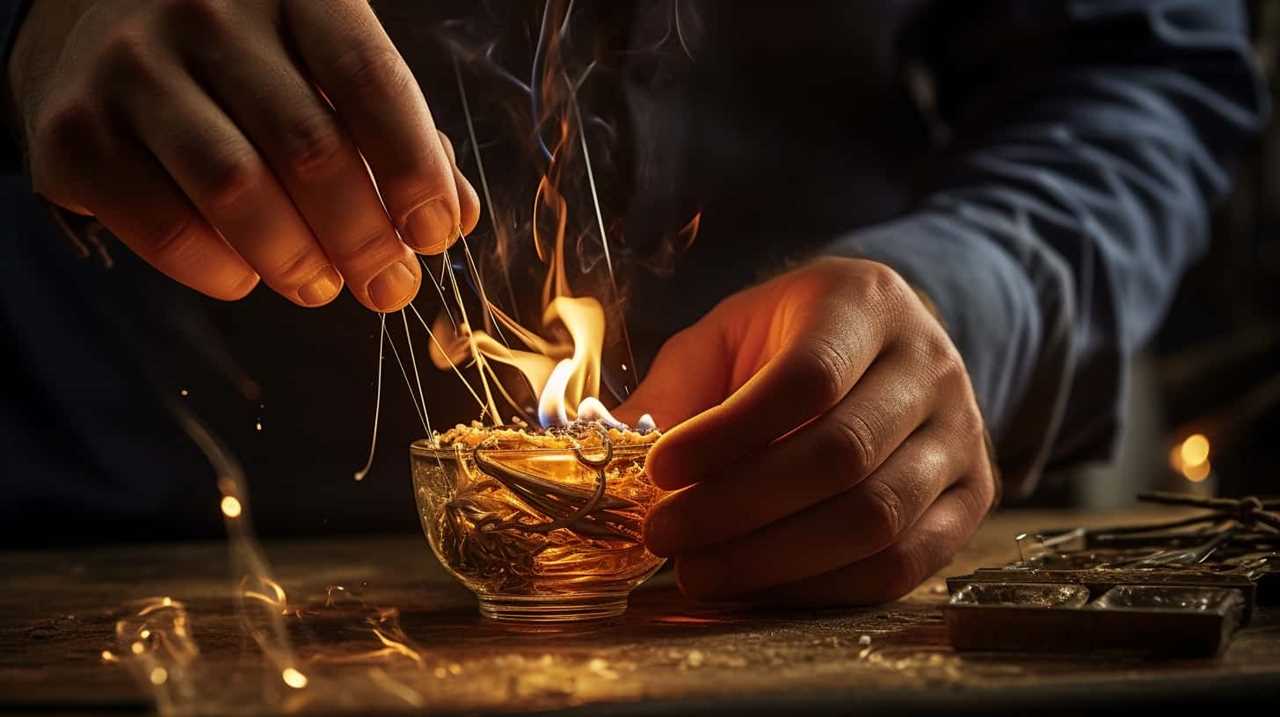
In addition to its commercial success, ‘Candle in the Wind’ received numerous awards and recognition, including a Grammy Award for Best Male Pop Vocal Performance.
Record-Breaking Sales and Awards
We were amazed by the record-breaking sales and awards that Candle in the Wind achieved. This iconic song by Elton John captivated audiences worldwide and became a cultural phenomenon. Here are three reasons why its success was unprecedented:
- Unparalleled Sales: Candle in the Wind sold over 33 million copies worldwide, making it one of the best-selling singles in history. Its emotional tribute to Marilyn Monroe resonated with fans, propelling it to the top of the charts in multiple countries.
- Global Popularity: The song reached number one in numerous countries, including the United States, United Kingdom, and Australia. Its universal appeal transcended language barriers, connecting with people from all walks of life.
- Award-Winning Achievement: Candle in the Wind received numerous accolades, including a Grammy Award for Best Male Pop Vocal Performance. Its impact on popular culture was recognized by the induction into the Grammy Hall of Fame.
The success of Candle in the Wind solidified its place in music history, leaving an indelible mark on the hearts of millions.
Cultural Impact and Recognition
The impact and recognition of Candle in the Wind can be seen through its chart success and numerous awards.
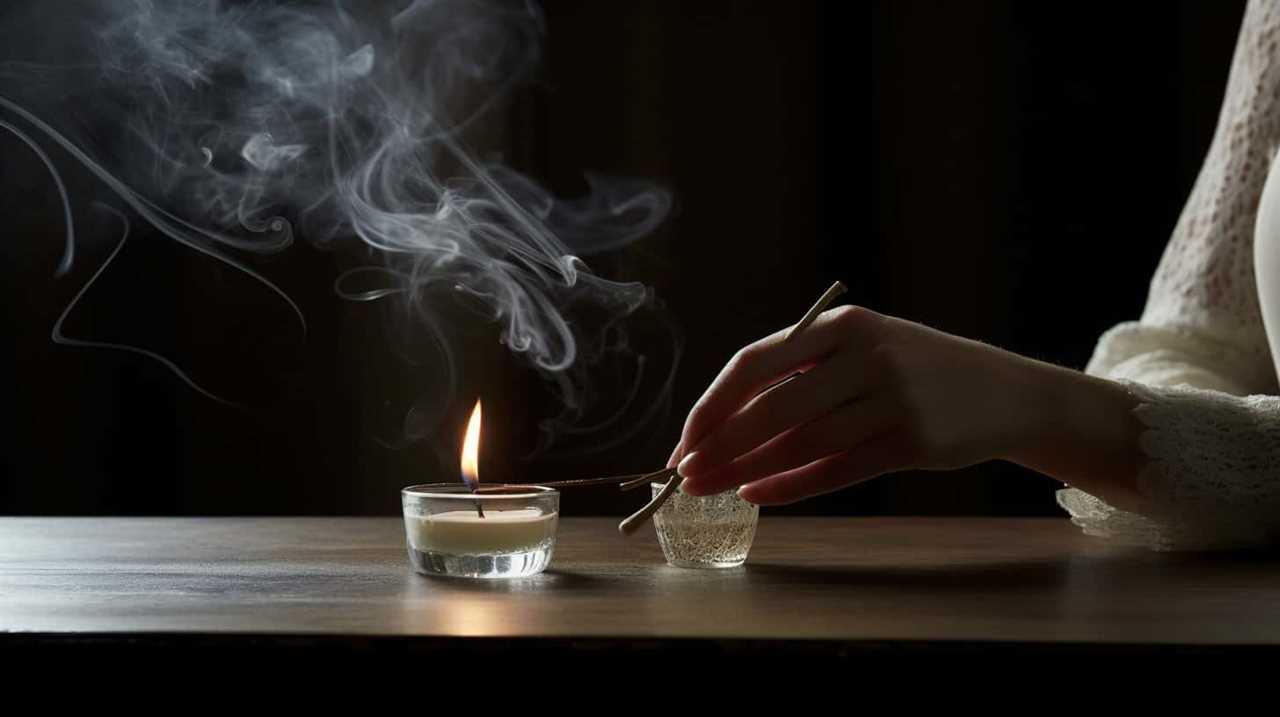
The song, originally released by Elton John in 1973 as a tribute to Marilyn Monroe, gained cultural significance when it was re-recorded and dedicated to Princess Diana after her tragic death in 1997.
The reworked version became a global phenomenon, reaching the top of the charts in multiple countries and becoming one of the best-selling singles of all time.
Its success was further cemented by its critical acclaim, earning Elton John a Grammy Award for Best Male Pop Vocal Performance.
Beyond its chart success and awards, Candle in the Wind has left a lasting legacy, serving as a poignant reminder of Princess Diana’s impact and the universal emotions of loss and remembrance.
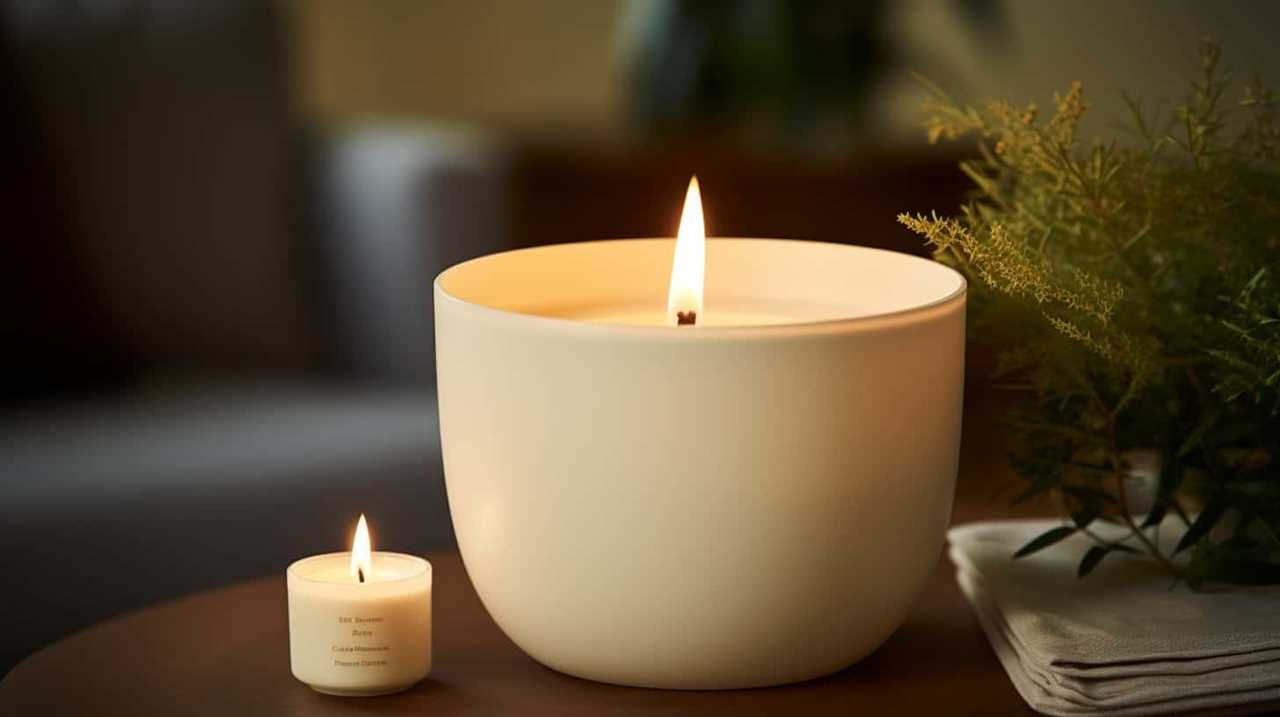
Collaborators and Production Details
Elton John collaborated with songwriter Bernie Taupin and producer Gus Dudgeon to create the iconic song Candle in the Wind. The production details of the song, along with the creative decisions and musical arrangements made, played a significant role in its success.
Here are three key aspects of the collaboration and production process:
- Behind the scenes stories: The studio atmosphere and dynamics between Elton John, Bernie Taupin, and Gus Dudgeon were filled with creativity and collaboration. They worked tirelessly to perfect the song’s emotional impact and lyrical depth.
- Technical aspects of the production: The team experimented with different musical arrangements and instrumentation to create a unique sound that resonated with audiences. The use of piano, strings, and John’s powerful vocals added to the song’s emotional intensity.
- Influence on other artists: Candle in the Wind’s success not only impacted Elton John’s career but also influenced countless artists who admired the power of collaboration and the importance of artistic vision and execution.
The collaboration between Elton John, Bernie Taupin, and Gus Dudgeon resulted in a song that touched the hearts of millions. The emotional response from fans reflects the impact this song had on their lives.
Emotional Response From Fans
When it comes to the emotional response from fans, the song ‘Candle in the Wind’ has undoubtedly left a lasting impact.

The tears shed and profound emotions experienced by fans are a testament to the song’s power to connect with people on a deep level.
This emotional connection hasn’t only solidified Elton John’s fanbase but also created a sense of shared experience among his listeners.
Fan Tears and Emotions
As fans listen to ‘Candle in the Wind,’ they’re overwhelmed with tears and emotions. The song has a profound impact on its listeners, evoking a deep emotional connection. Here are three reasons why fans have such intense reactions to this iconic song:
- Raw vulnerability: Elton John’s heartfelt lyrics and powerful delivery tap into the raw emotions that many fans can relate to. The song captures the pain and loss experienced in the face of tragedy, creating a cathartic experience for listeners.
- Personal attachment: ‘Candle in the Wind’ has become synonymous with the loss of Princess Diana. Fans who admired her and felt a personal connection to her are particularly moved by the song’s tribute to her life and legacy.
- Timeless resonance: Despite its connection to a specific event, ‘Candle in the Wind’ transcends time and continues to resonate with fans of all ages. Its universal themes of love, loss, and remembrance strike a chord with listeners, allowing them to connect on a deeply emotional level.
These emotional reactions from fans highlight the lasting impact ‘Candle in the Wind’ has had on its fanbase.
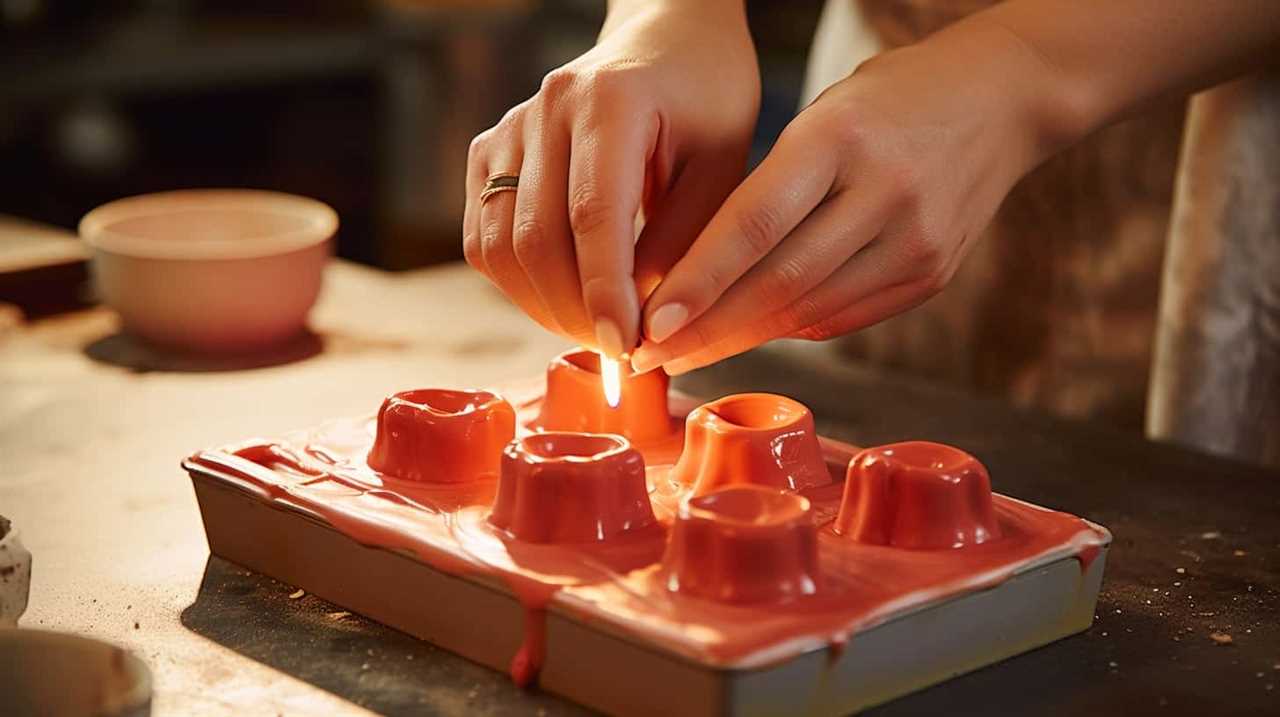
Impact on Fanbase
The emotional impact of ‘Candle in the Wind’ on its fanbase is undeniable. This iconic song by Elton John has resonated deeply with listeners, eliciting strong fan reactions and forging an emotional connection that transcends generations.
The heartfelt lyrics, written by Bernie Taupin, pay homage to the tragic life and untimely death of Marilyn Monroe. Through its poignant storytelling and introspective melodies, ‘Candle in the Wind’ has touched the hearts of millions, evoking feelings of empathy, nostalgia, and melancholy.
Fans have been moved to tears by the raw emotion conveyed in the song, finding solace and comfort in its relatable themes of loss and longing. This emotional connection between the song and its fanbase sets the stage for the numerous covers and adaptations that have followed, as artists seek to capture the same raw emotion and connect with listeners on a profound level.
Covers and Adaptations of the Song
After learning about the meaning behind the song ‘Candle in the Wind,’ we were intrigued by the numerous covers and adaptations that have been made over the years. This demonstrates the impact the song has had on popular culture and its ability to resonate with people from different backgrounds and musical styles.

The following three examples highlight the diversity of covers and tributes:
- Elton John’s live performance at Princess Diana’s funeral: This heartfelt rendition brought the song to a new level of emotional depth, capturing the grief and sadness felt by millions around the world.
- Ed Sheeran’s acoustic cover: Sheeran’s stripped-down version showcased his unique vocal style and brought a contemporary twist to the classic song.
- The Broadway adaptation: The inclusion of ‘Candle in the Wind’ in the hit musical ‘Moulin Rouge!’ introduced the song to a new generation of theatergoers, adding a theatrical flair to the iconic tune.
These covers and adaptations not only pay tribute to the original version but also allow the song to continue touching hearts and inspiring audiences across generations.
Controversies and Criticisms
We frequently encountered controversies and criticisms surrounding the song ‘Candle in the Wind’. Despite its immense popularity and critical acclaim, the song has also faced its fair share of public backlash and controversial reception.
One of the main controversies surrounding the song is its subject matter. Originally written as a tribute to Marilyn Monroe, it was later adapted as a tribute to Princess Diana after her tragic death in 1997. While many praised Elton John’s heartfelt performance and the song’s emotional impact, others criticized it as a opportunistic move to capitalize on a tragedy.
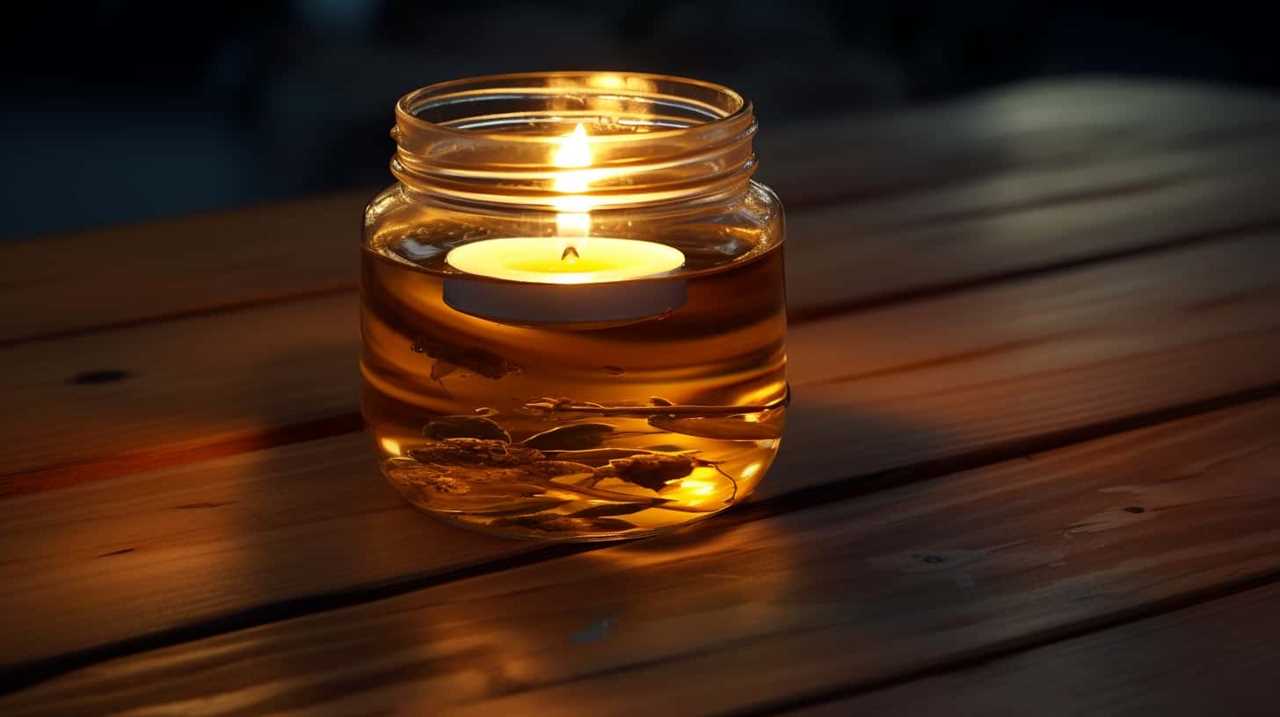
The song’s release was met with mixed reactions, with some questioning the appropriateness of turning a tribute to one iconic figure into another. Nonetheless, the controversy and public backlash didn’t diminish the impact and influence of ‘Candle in the Wind’ on Elton John’s career.
Influence on Elton John’s Career
One significant aspect of ‘Candle in the Wind’ is its influence on our career as musicians. Elton John’s musical influence has been profound, and this song played a crucial role in solidifying his status as a legendary artist. Here are three ways in which ‘Candle in the Wind’ impacted our journey:
- Elevating our songwriting abilities: The lyrical depth and emotional resonance of this song inspired us to push the boundaries of our own songwriting, striving to create music that resonates with people on a deeper level.
- Amplifying our social impact: Through this song, Elton John used his platform to bring attention to important social issues, showcasing the power of music as a catalyst for change. This has motivated us to use our music to address relevant societal concerns as well.
- Providing solace during personal struggles: Elton John’s personal struggles, as reflected in ‘Candle in the Wind’, reminded us that even in the face of adversity, music can be a source of healing and strength. This has influenced us to approach our own challenges with resilience and find solace in our art.
Frequently Asked Questions
What Is the Meaning Behind the Title "Candle in the Wind"?
The meaning behind the title "Candle in the Wind" is often debated due to its ambiguity. It has sparked controversy, as some interpret it as a symbol of fragility and fleeting fame, while others see it as a tribute to someone who burned brightly but tragically.
How Did the Song "Candle in the Wind" Become Popular?
The song "Candle in the Wind" became popular due to its profound cultural impact and the overwhelming positive reactions from fans. Its emotional and heartfelt lyrics resonated with audiences, making it a timeless and iconic piece of music.

Were There Any Controversies Surrounding the Song?
Controversies surrounding the song ‘Candle in the Wind’ include public reaction to its release and criticism over the re-release after Princess Diana’s death. These controversies fueled discussions about the song’s impact and appropriateness.
Who Were the Other Musicians Involved in the Production of "Candle in the Wind"?
Elton John and Bernie Taupin, the talented musicians involved in the production of "Candle in the Wind," crafted a heartfelt tribute to a beloved icon. Their collaboration resulted in a timeless song that resonates with audiences to this day.
How Did Elton John Feel About the Song’s Success and Impact on His Career?
Elton John’s emotional connection to "Candle in the Wind" is undeniable. Its impact on his legacy cannot be overstated. The success of the song not only elevated his career but also solidified his status as a music icon.
Conclusion
In conclusion, ‘Candle in the Wind’ is a poignant and emotional song that holds a significant place in music history. With its heartfelt lyrics and powerful melody, the song speaks to the universal experience of loss and grief.
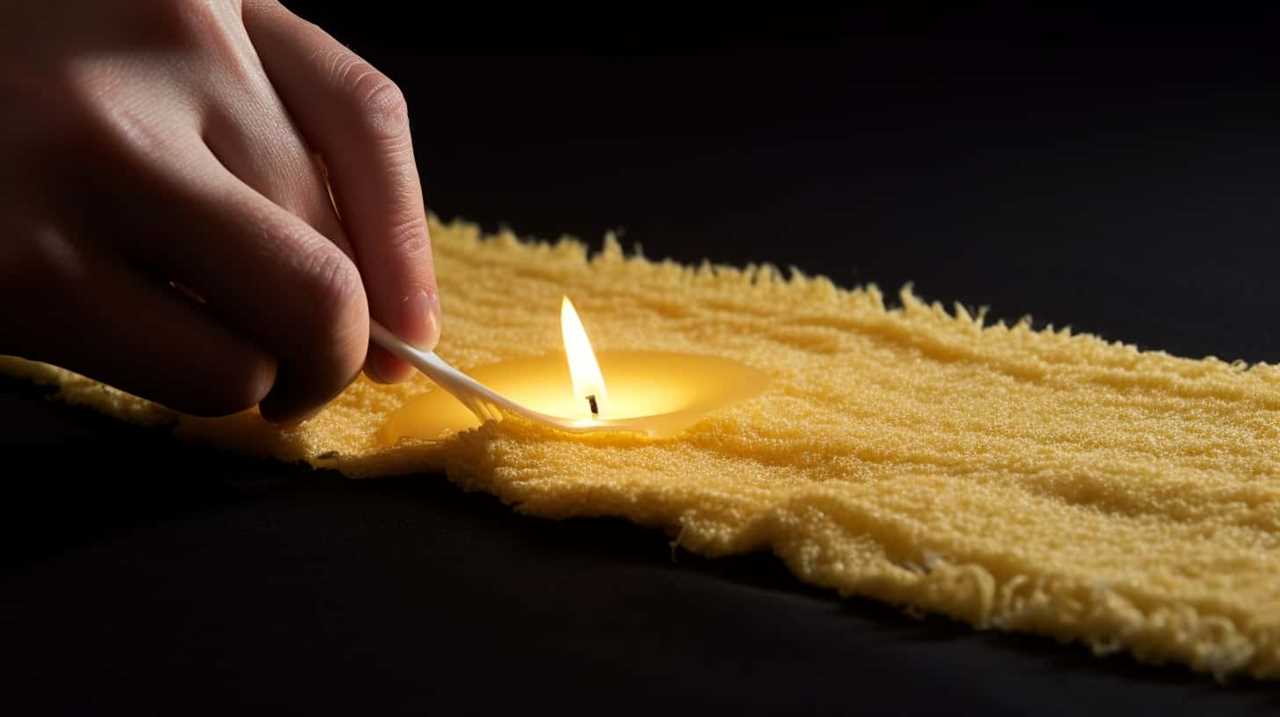
One interesting statistic to note is that ‘Candle in the Wind’ became the best-selling single of all time, with more than 33 million copies sold worldwide. This achievement highlights the song’s immense popularity and enduring impact on listeners around the globe.
I’m Jane and I love candles. I have candles everywhere in my house–in every room, on every surface. I love the smell of candles, and I love how they make my place feel warm and cozy.
Candles are really important to me. They help me relax and de-stress after a long day. They remind me of happy memories, and they make me feel calm and peaceful. I can’t imagine my life without candles!
-

 Beginners Guides1 week ago
Beginners Guides1 week agoThe Similarities of Candle and Light Bulb Lamps
-

 Beginners Guides1 week ago
Beginners Guides1 week agoHow to Determine If Candles Will Melt Outside
-

 Beginners Guides3 months ago
Beginners Guides3 months agoHow To Burn A Candle Without A Wick
-

 Candles3 weeks ago
Candles3 weeks agoHow to Make Scented Candles
-

 Beginners Guides3 weeks ago
Beginners Guides3 weeks agoAre Yankee Candles Vegan?
-

 Beginners Guides3 weeks ago
Beginners Guides3 weeks agoHow to Make Soy Candles
-

 Beginners Guides1 month ago
Beginners Guides1 month agoHow to Make Candles in 5 Easy Steps
-

 Beginners Guides1 week ago
Beginners Guides1 week agoWhy is My Candle Not Sticking to the Glass?




